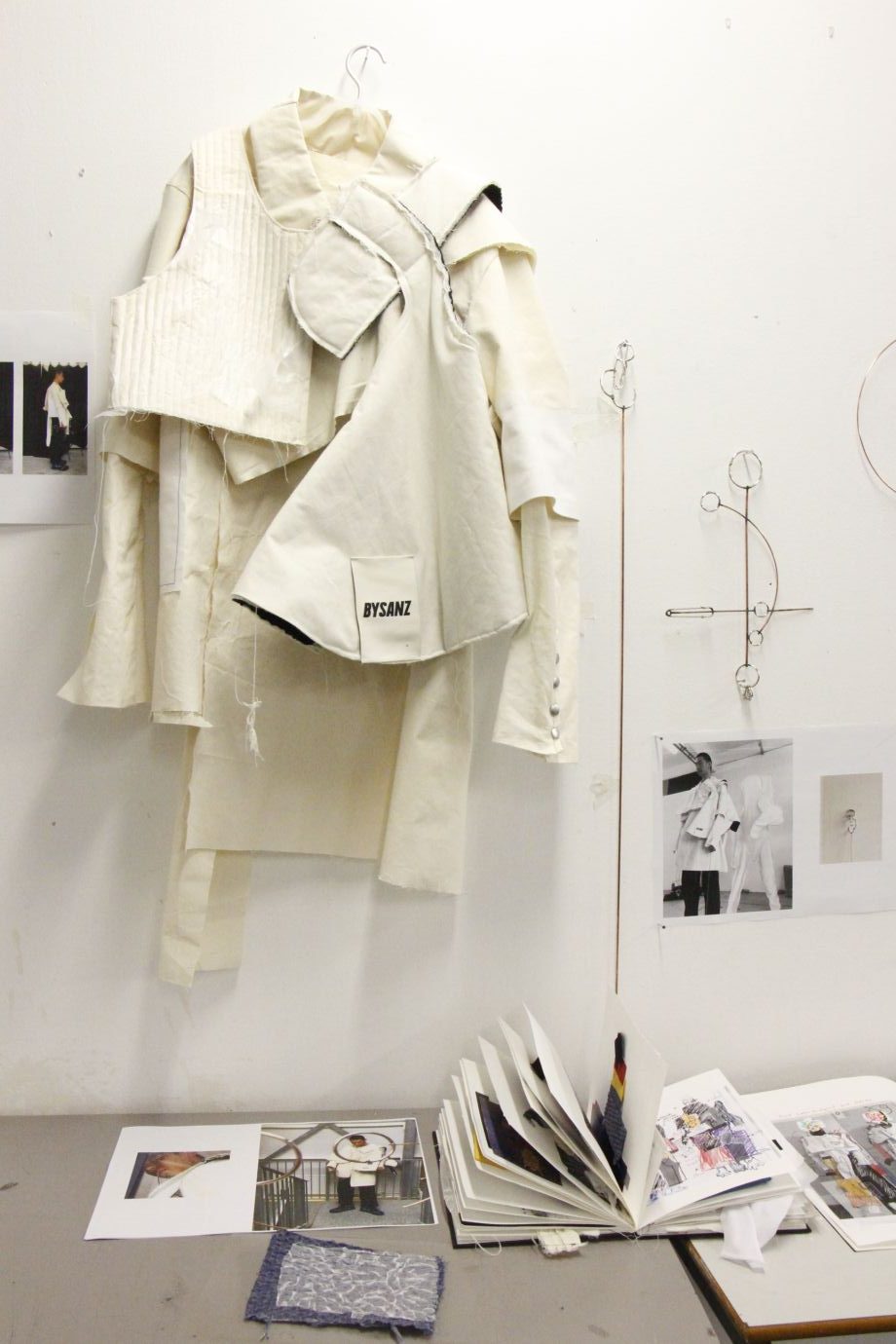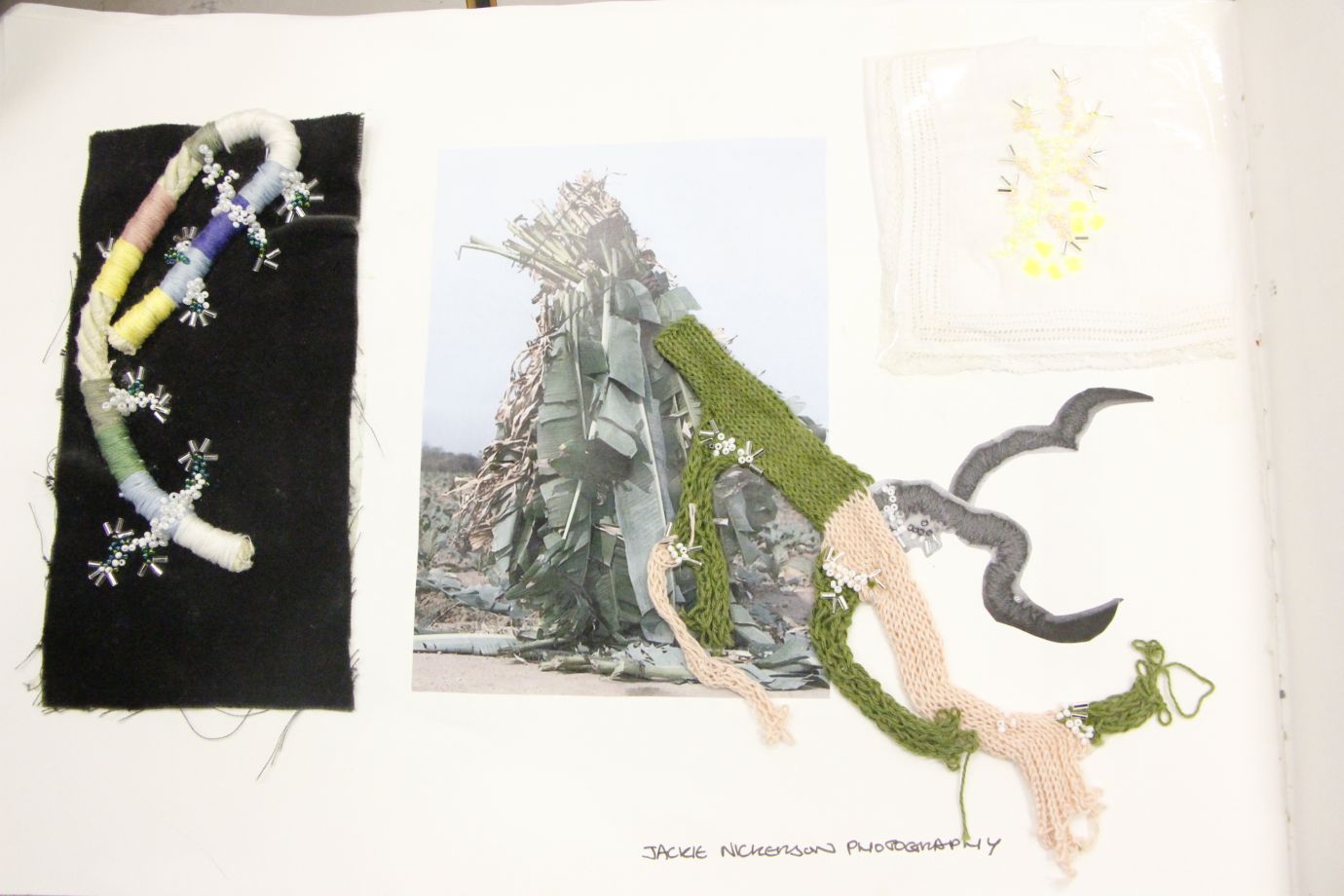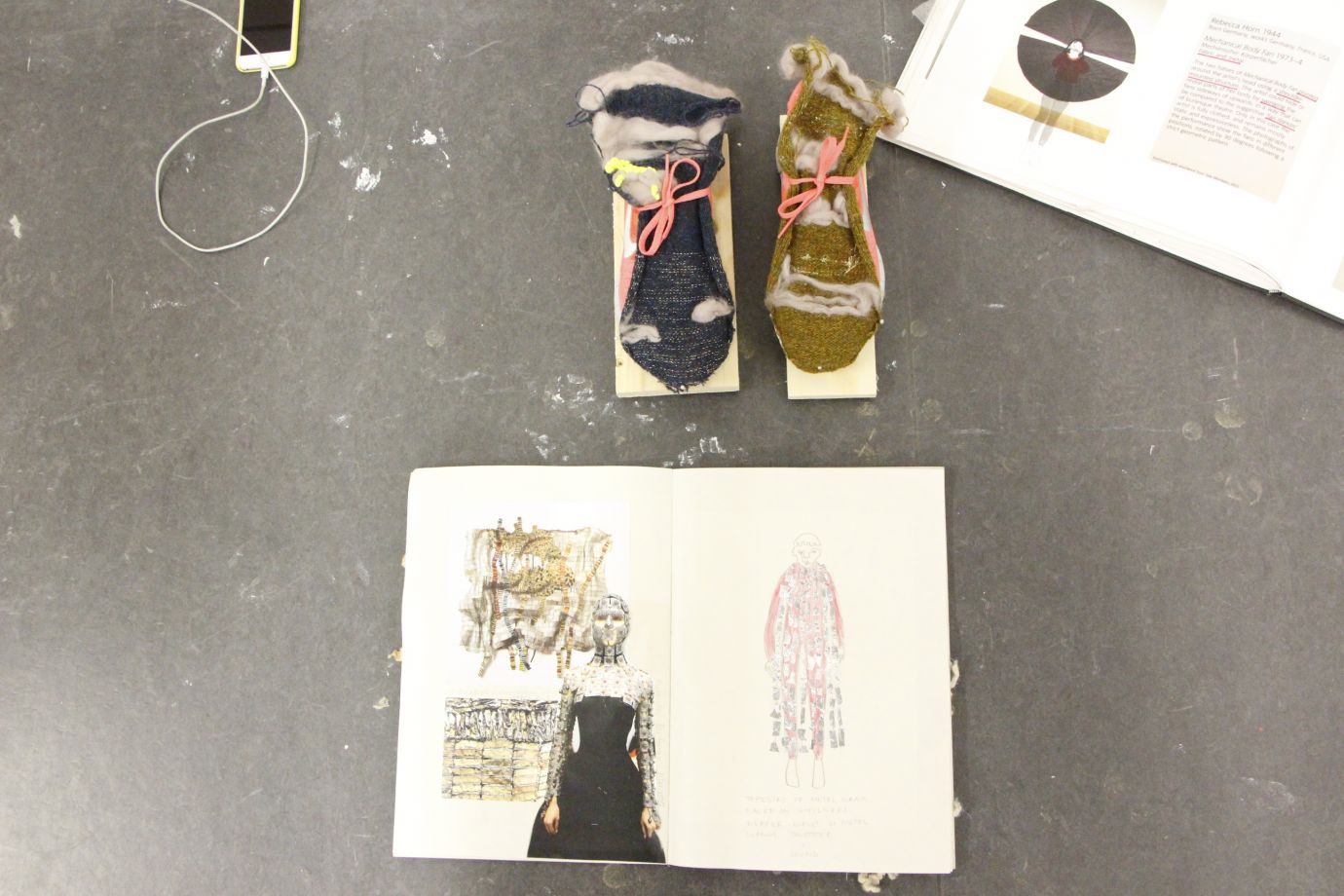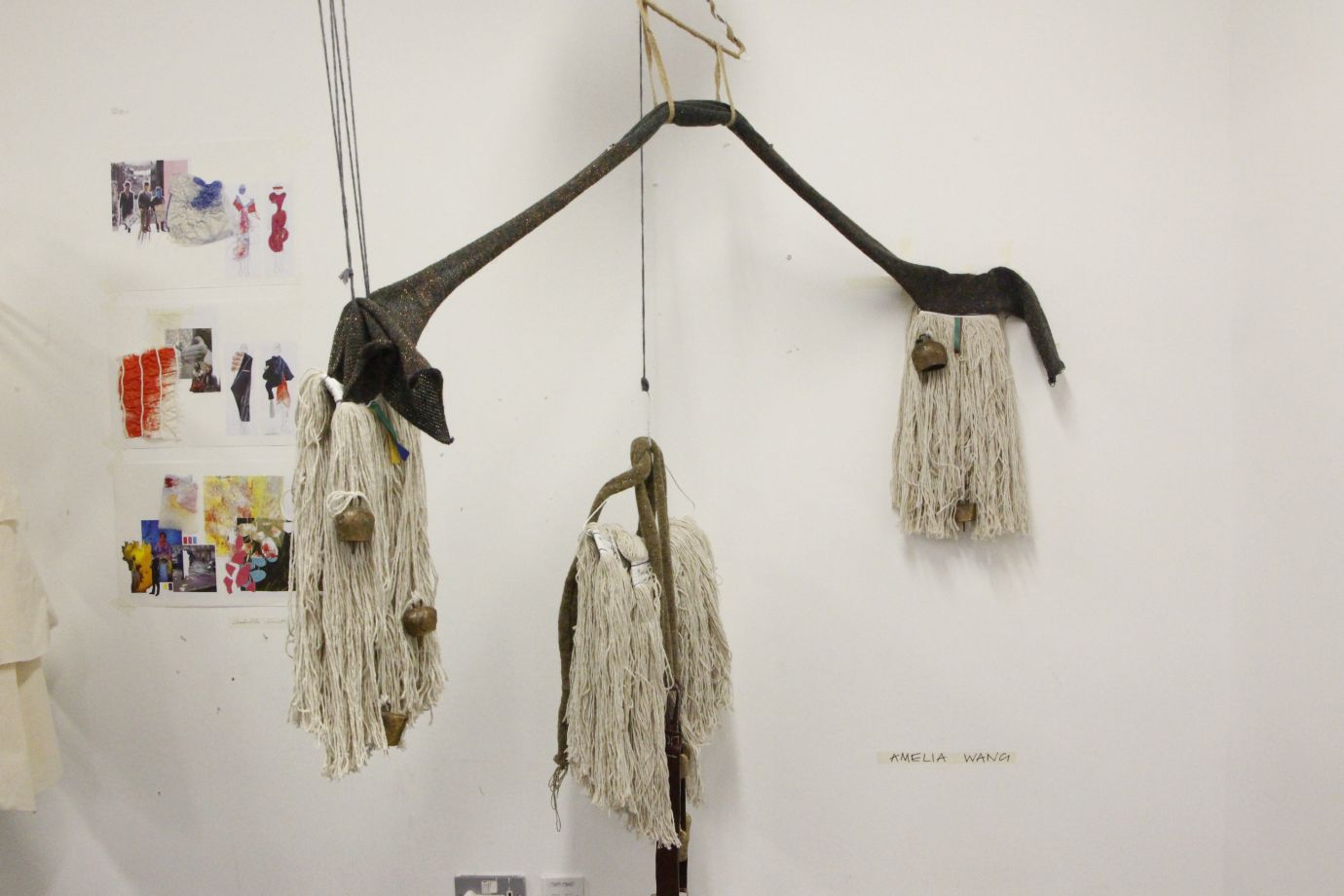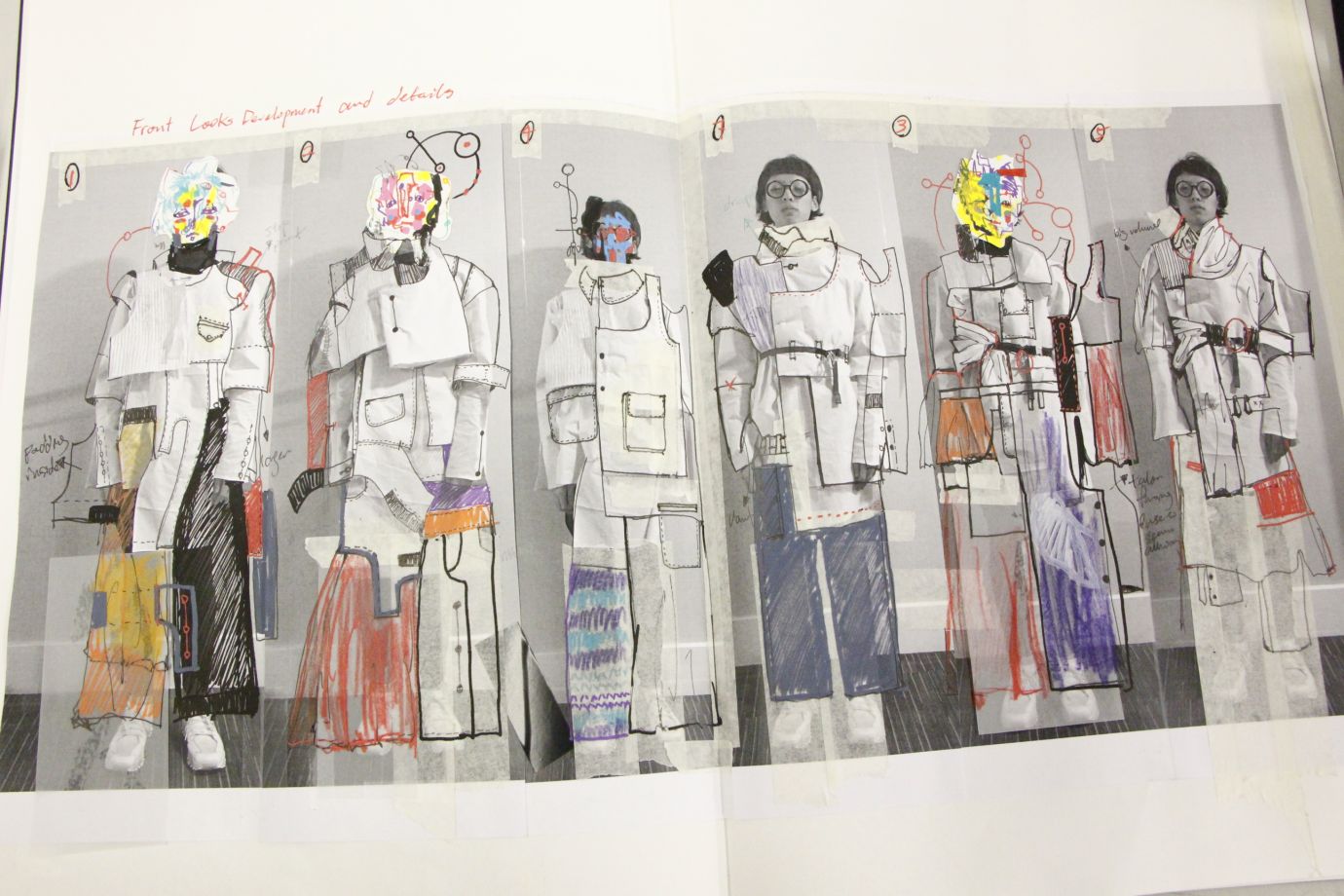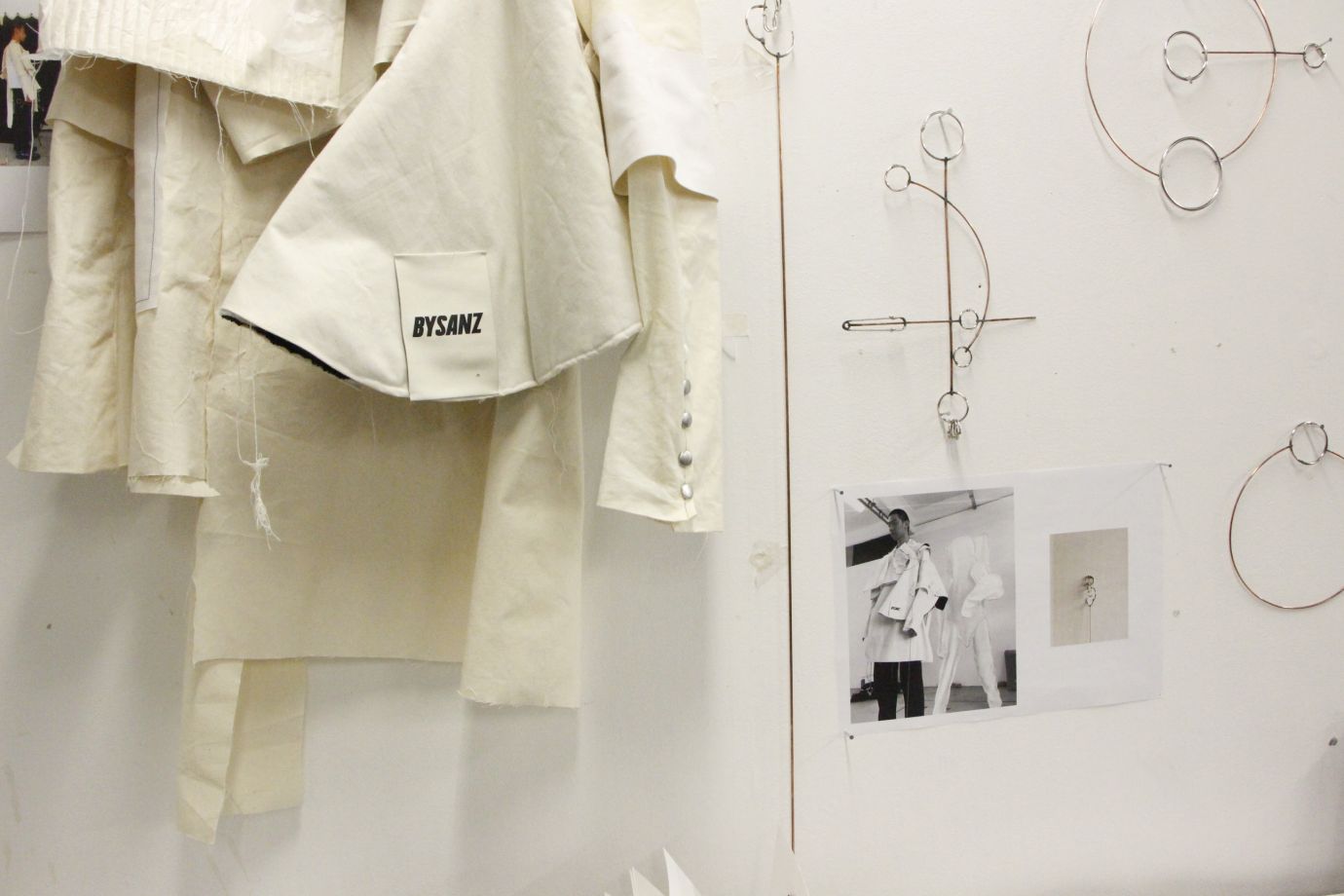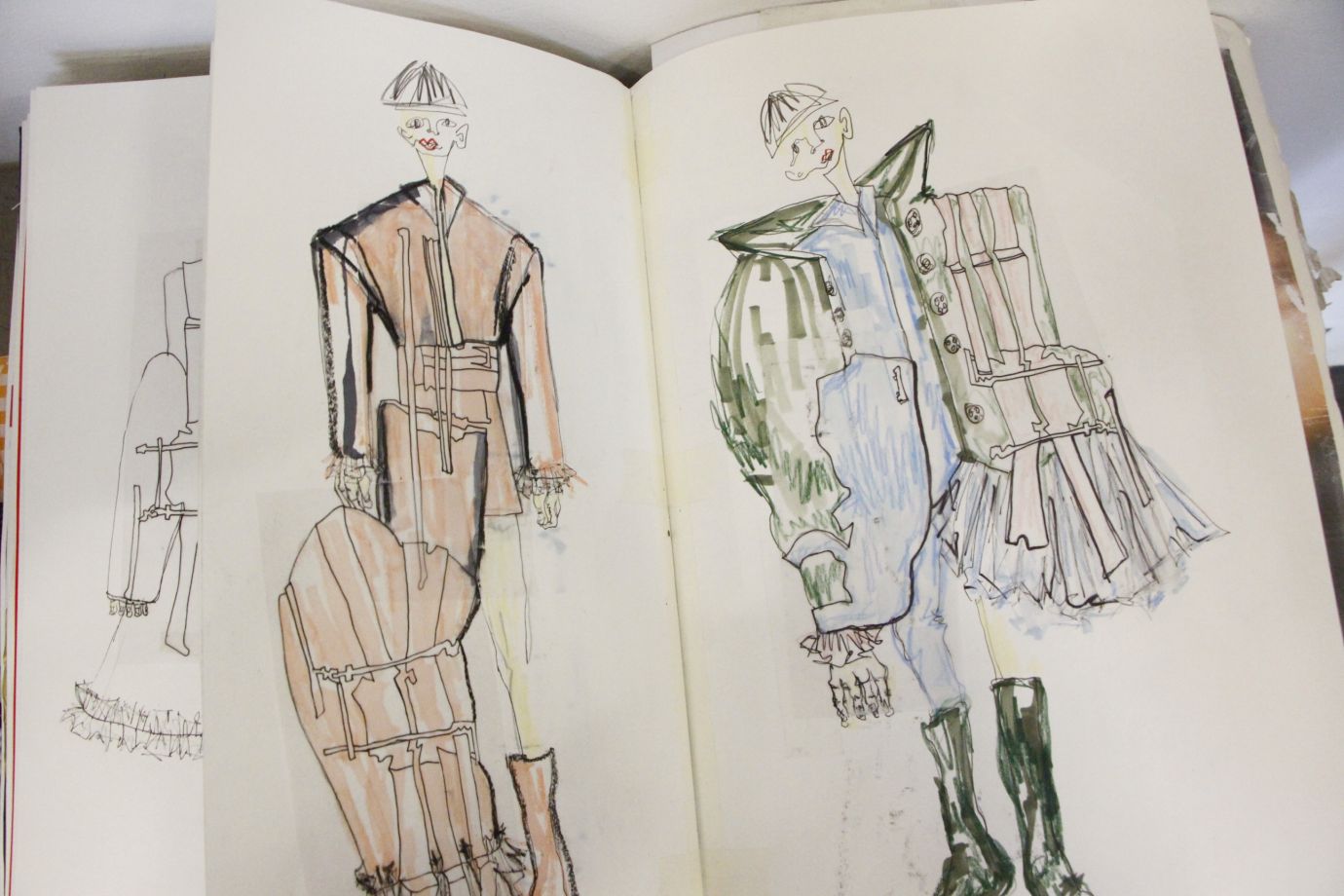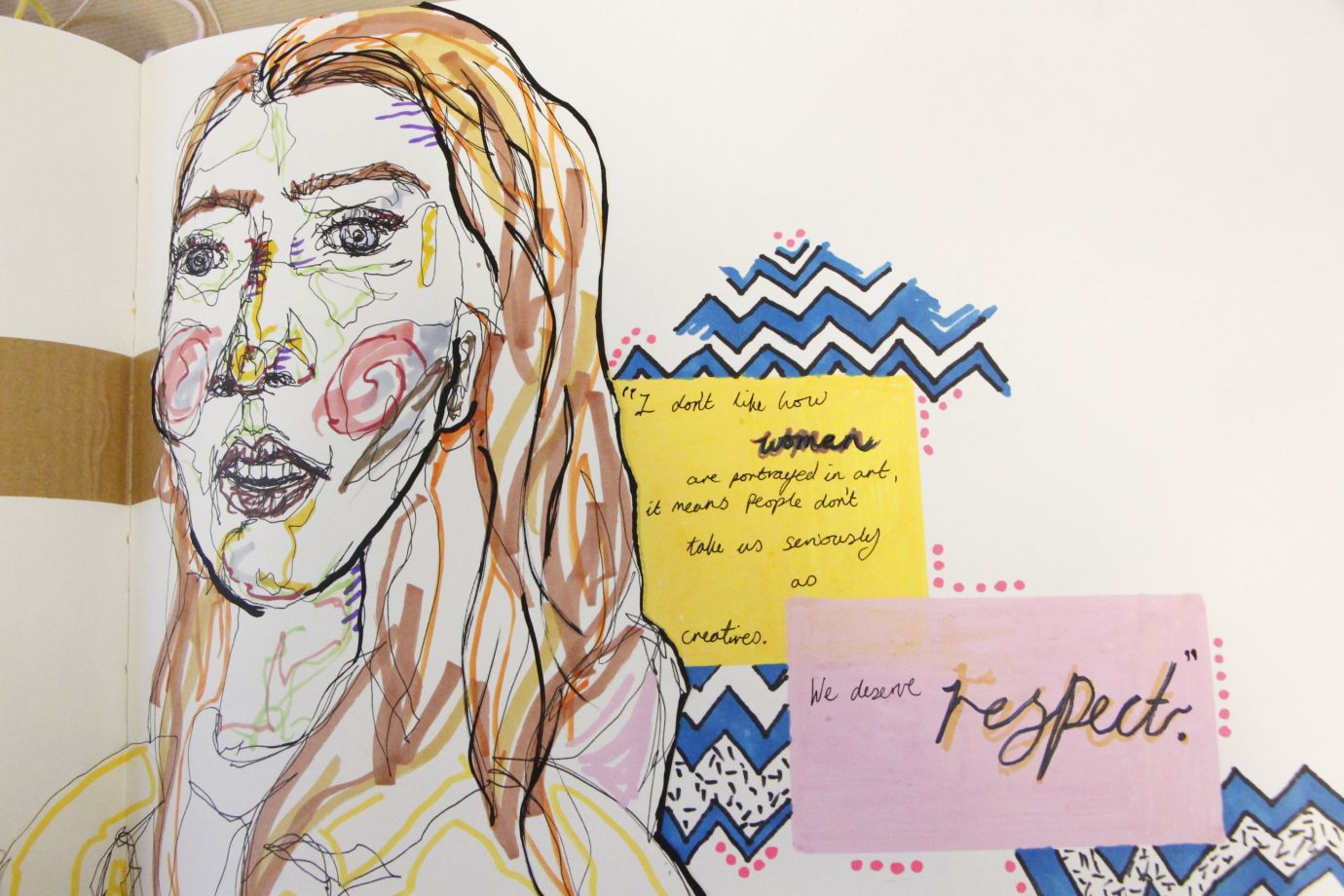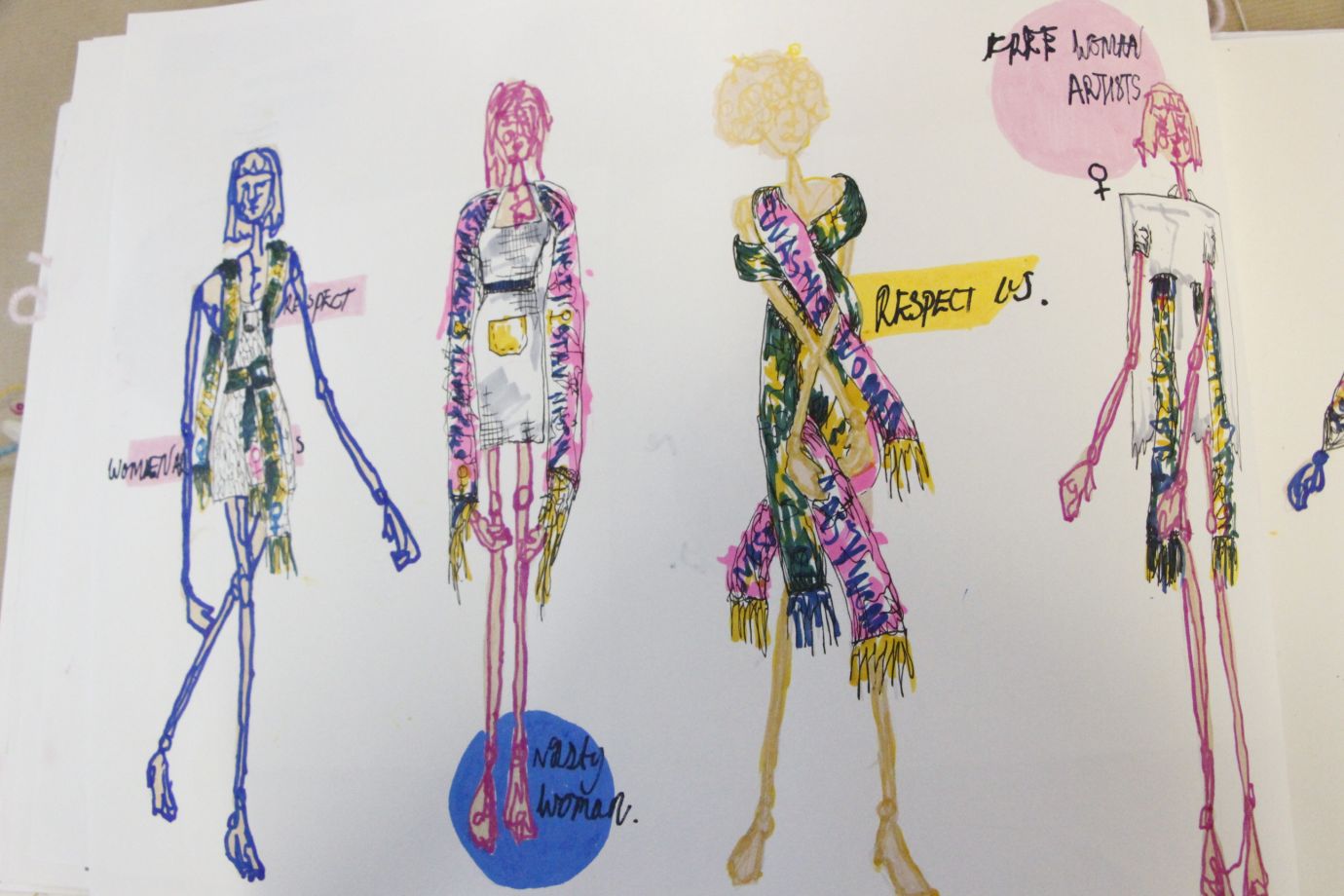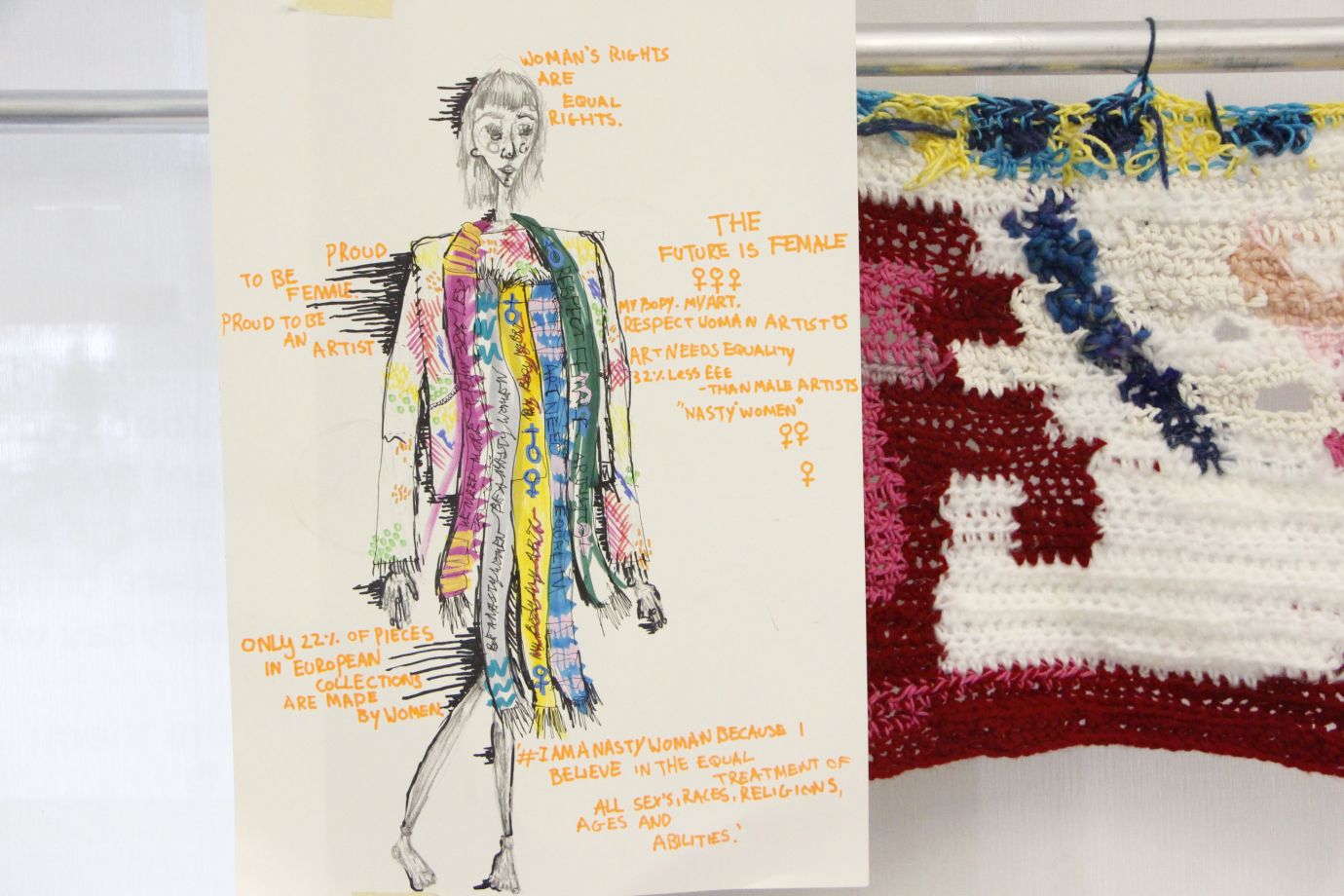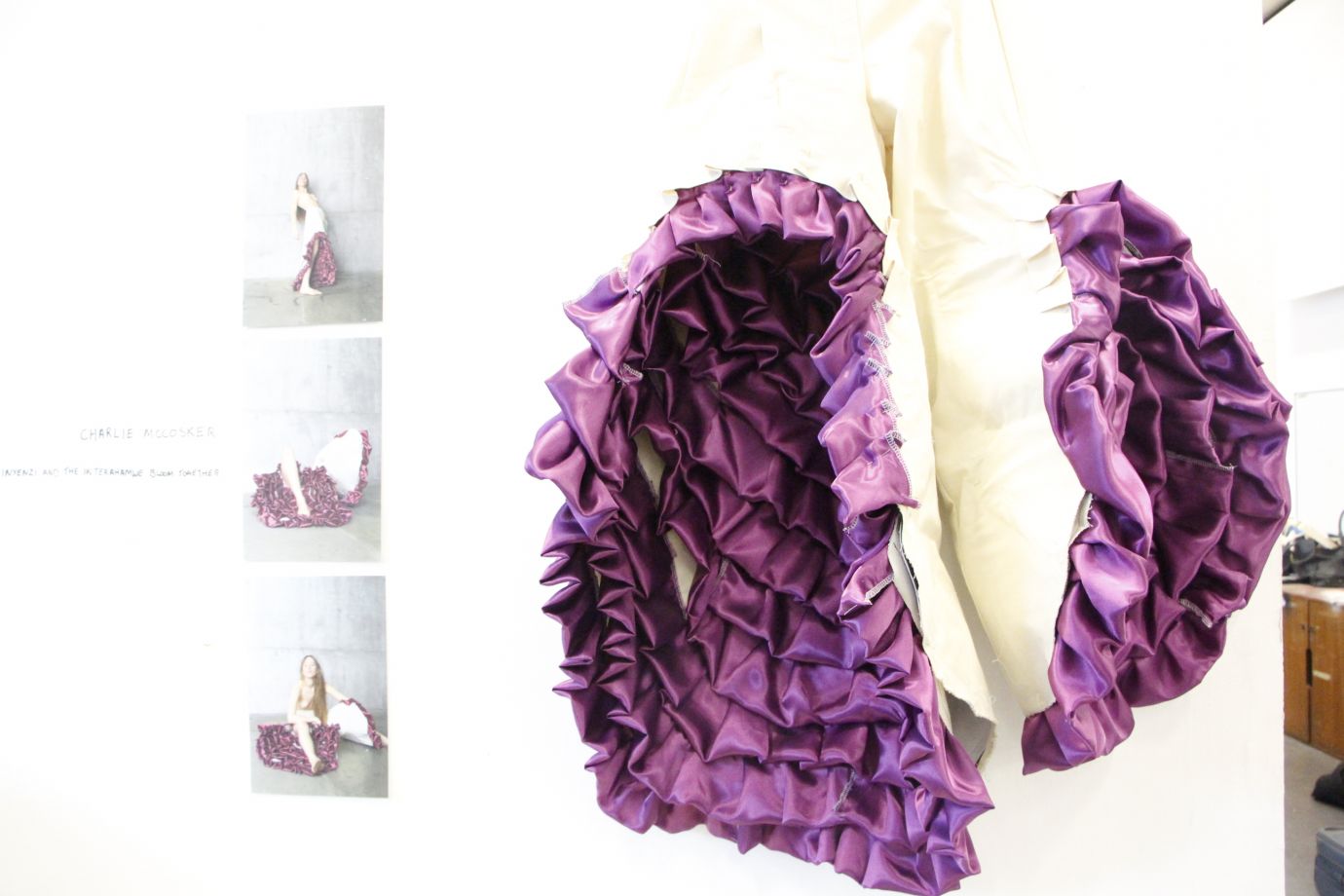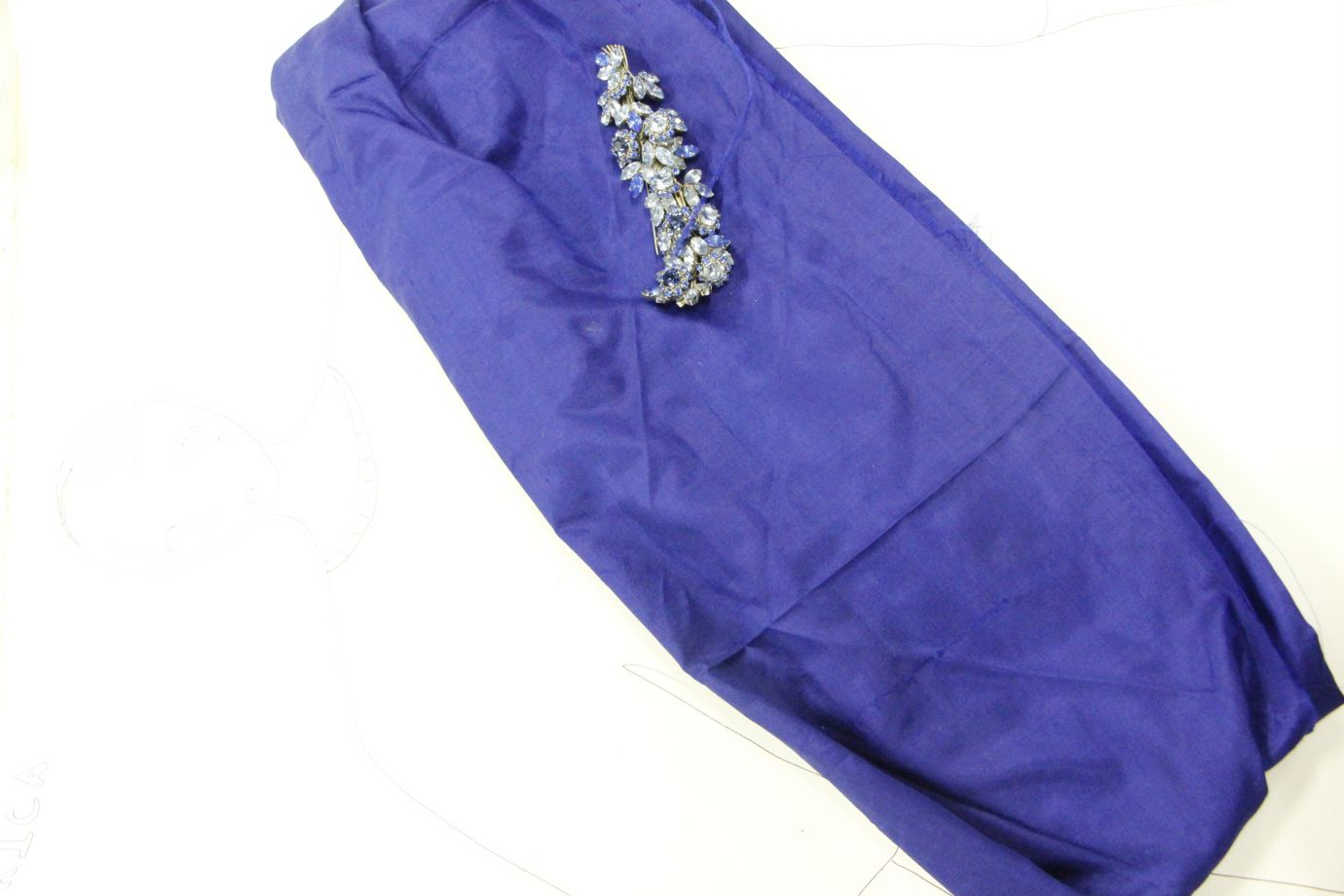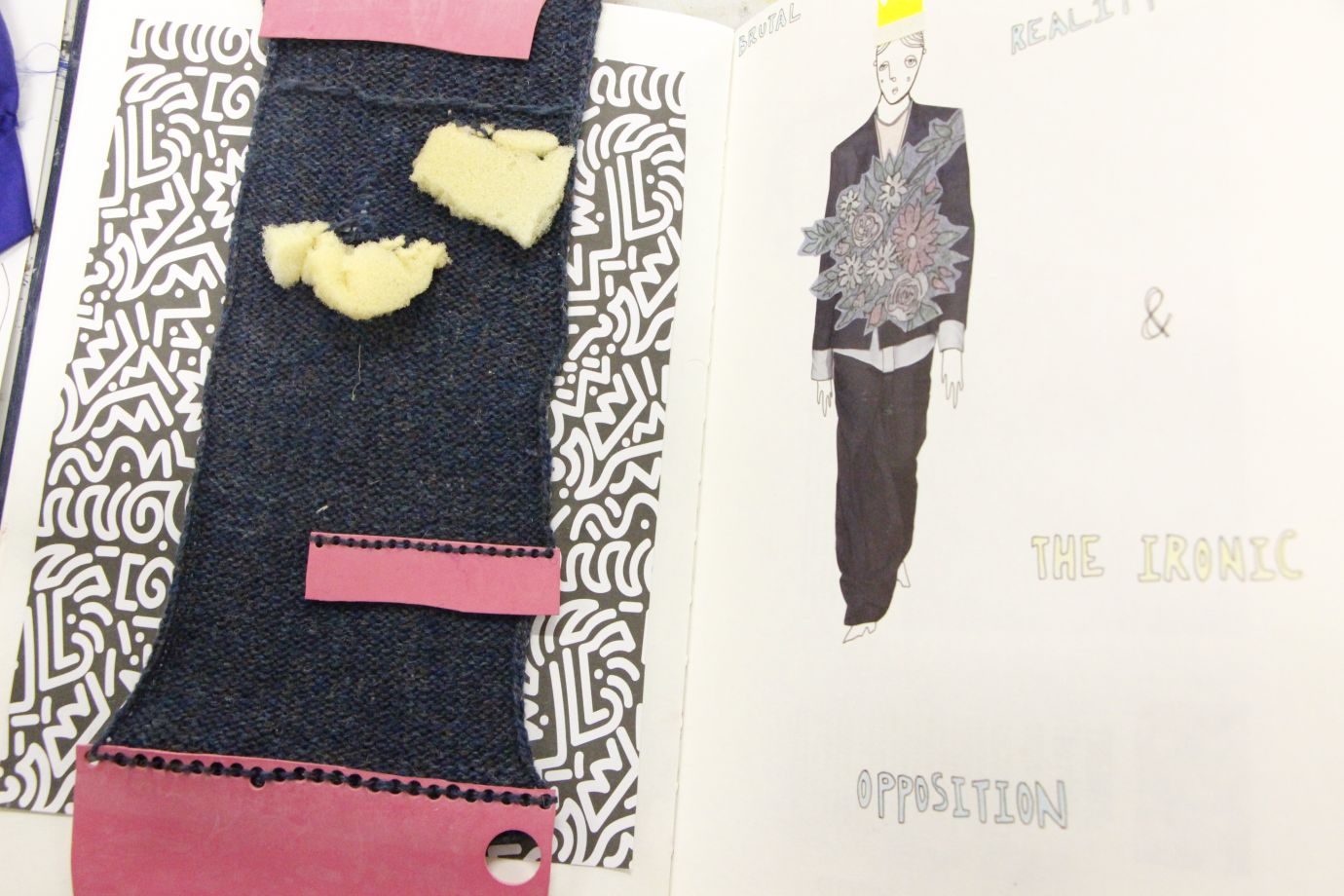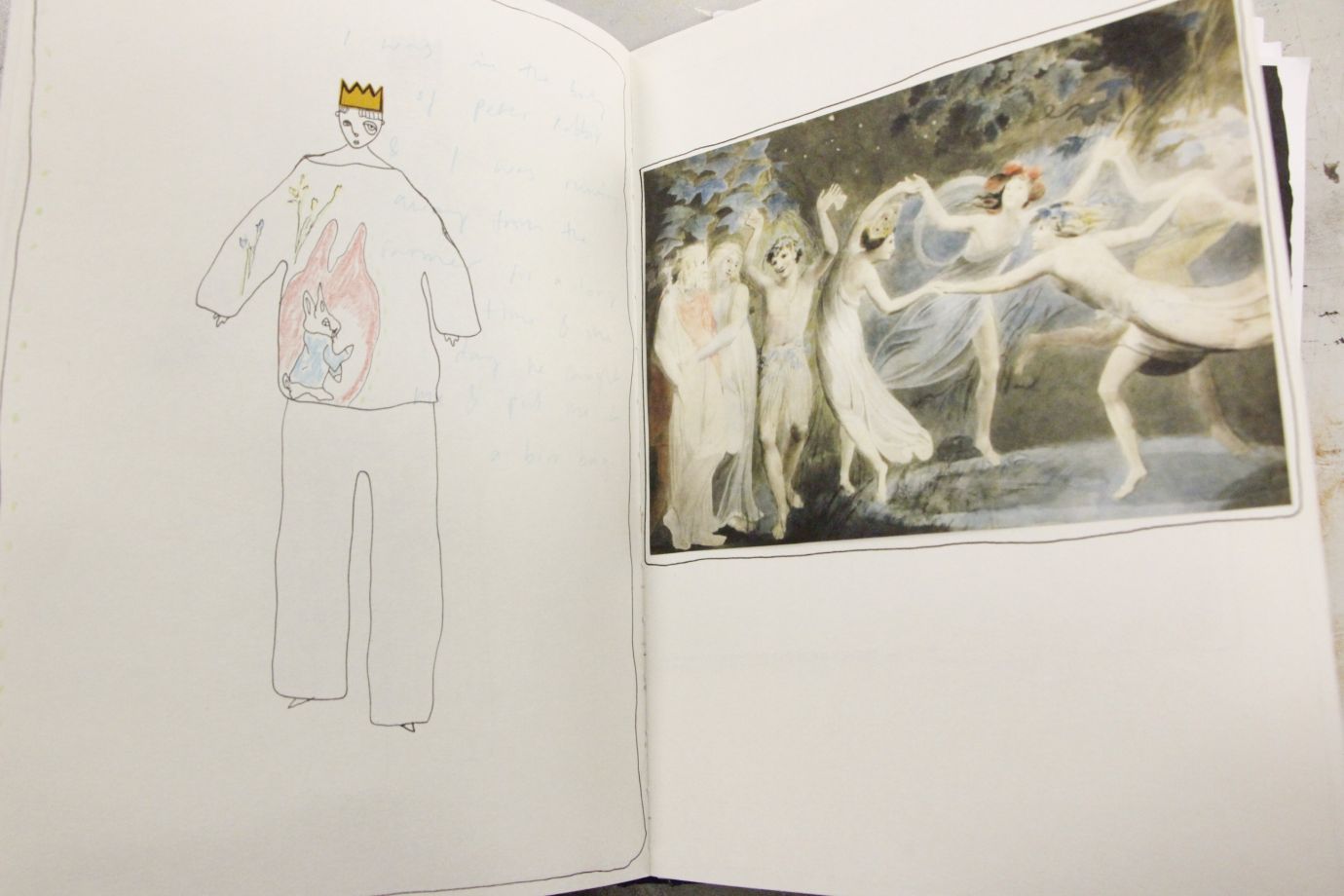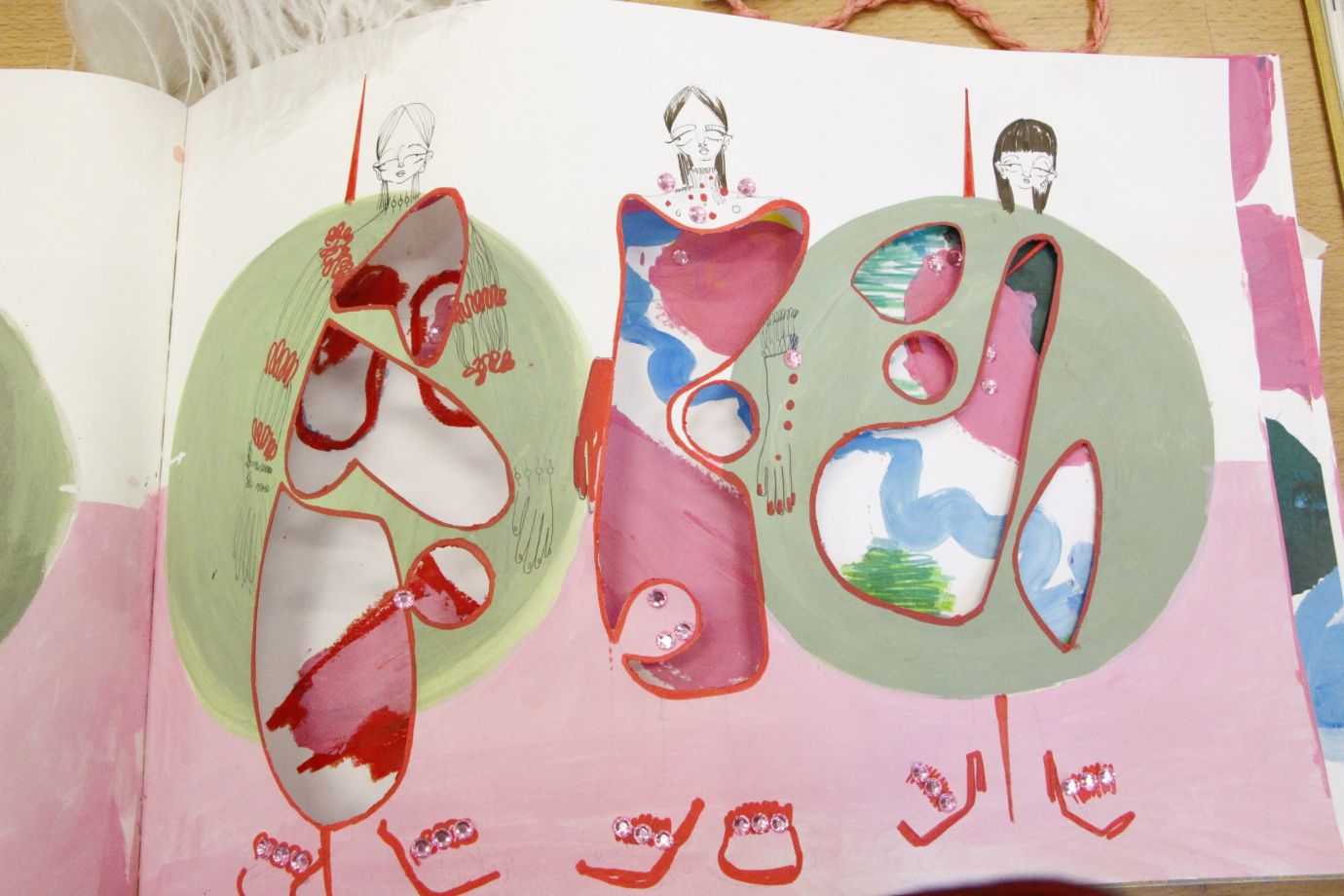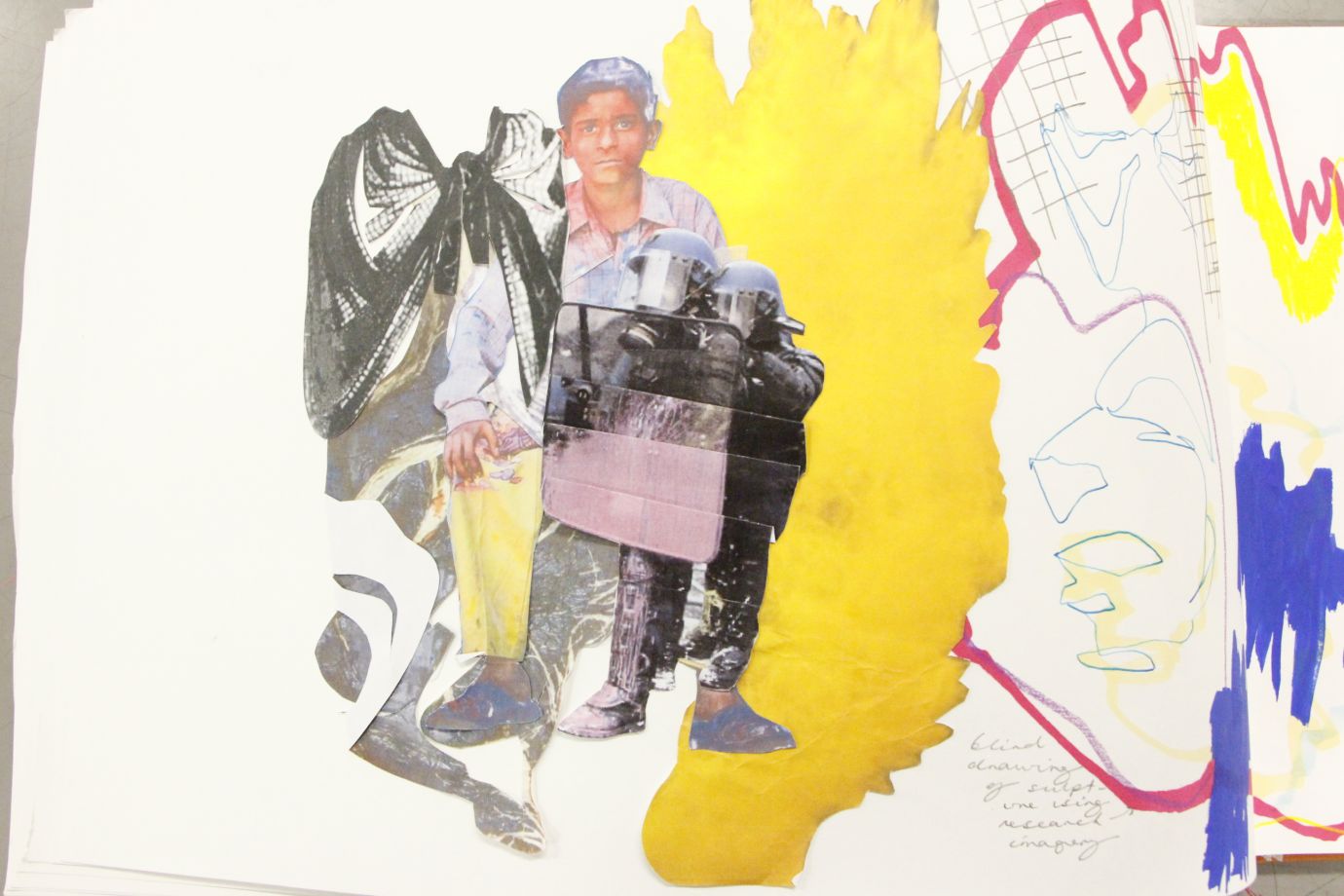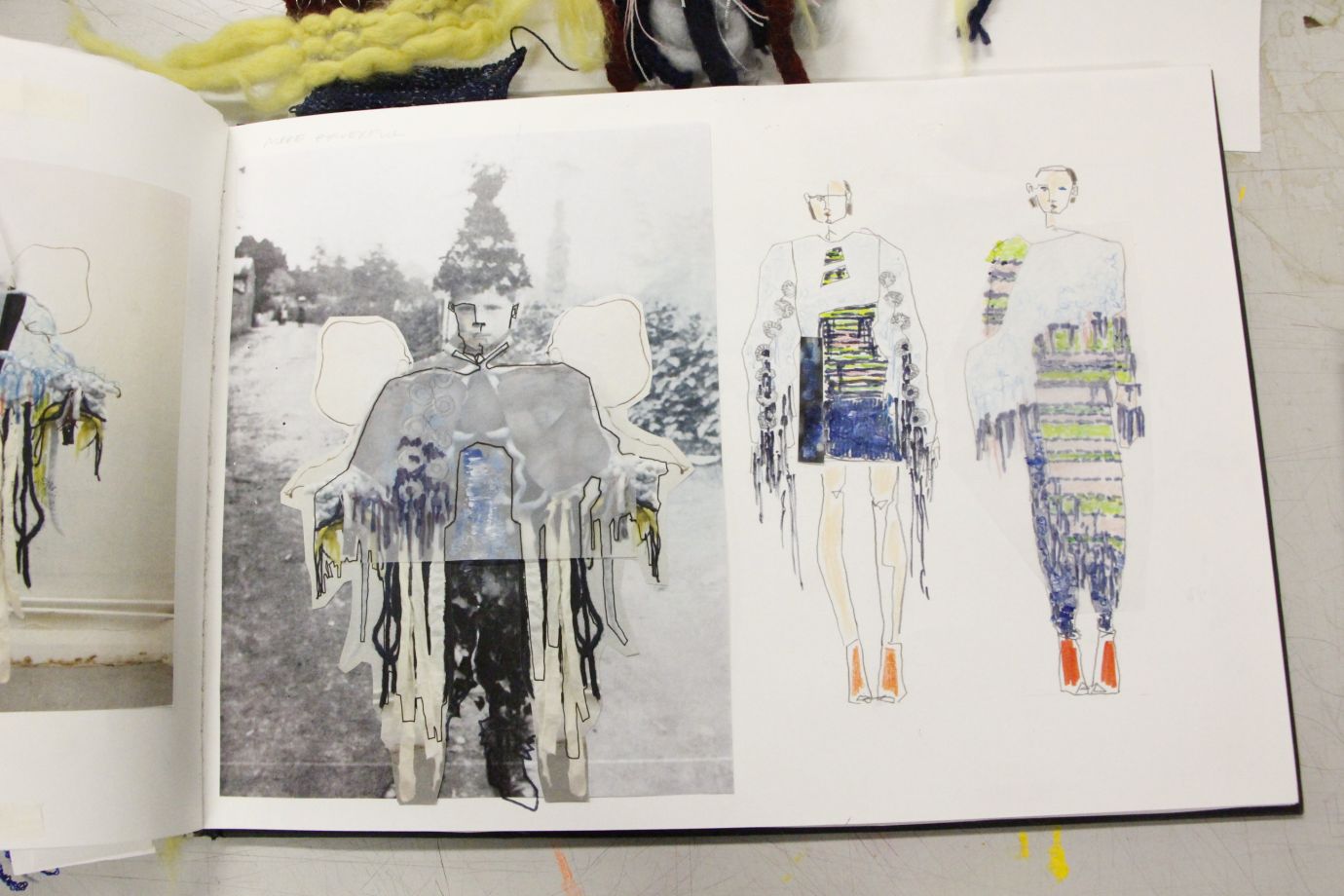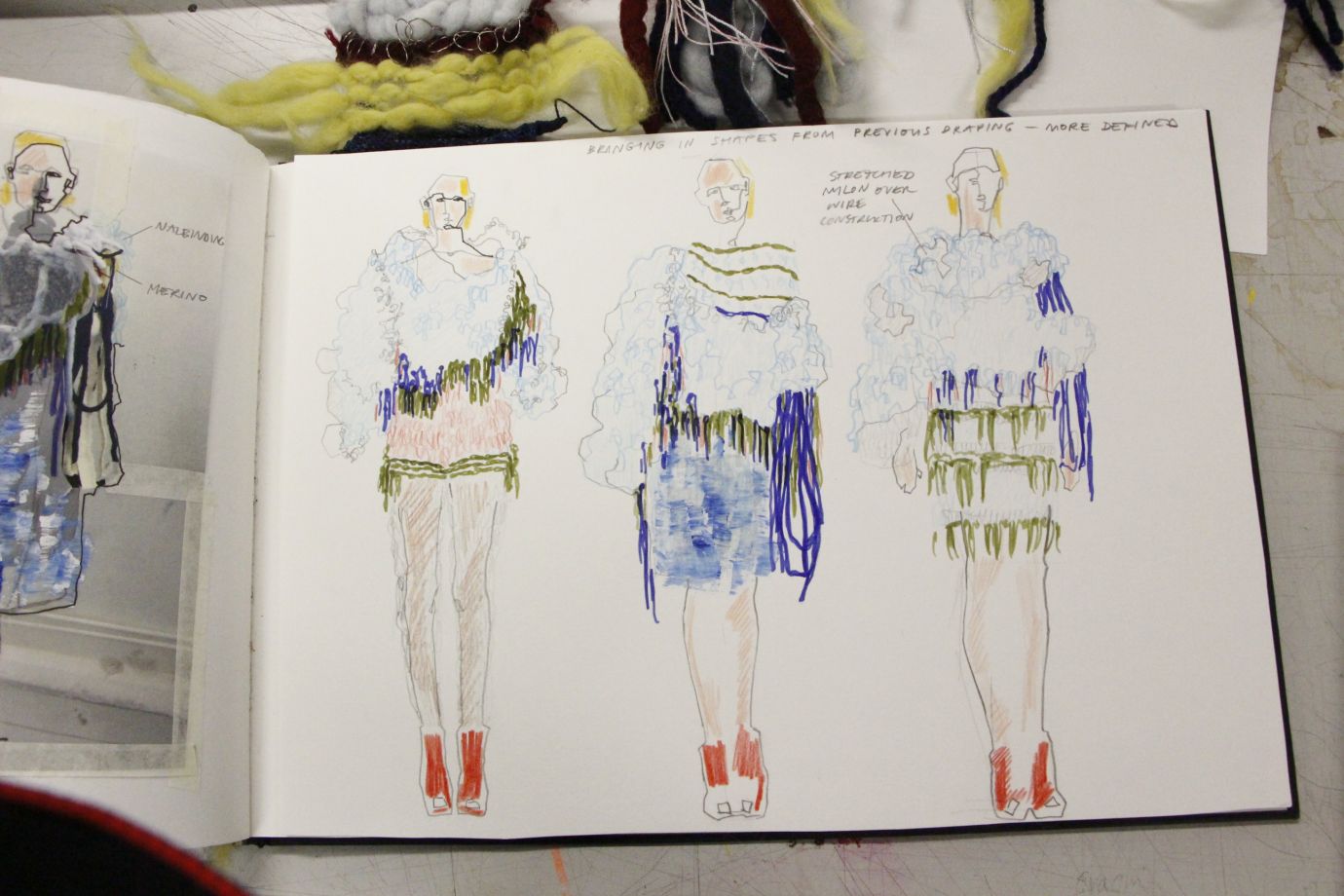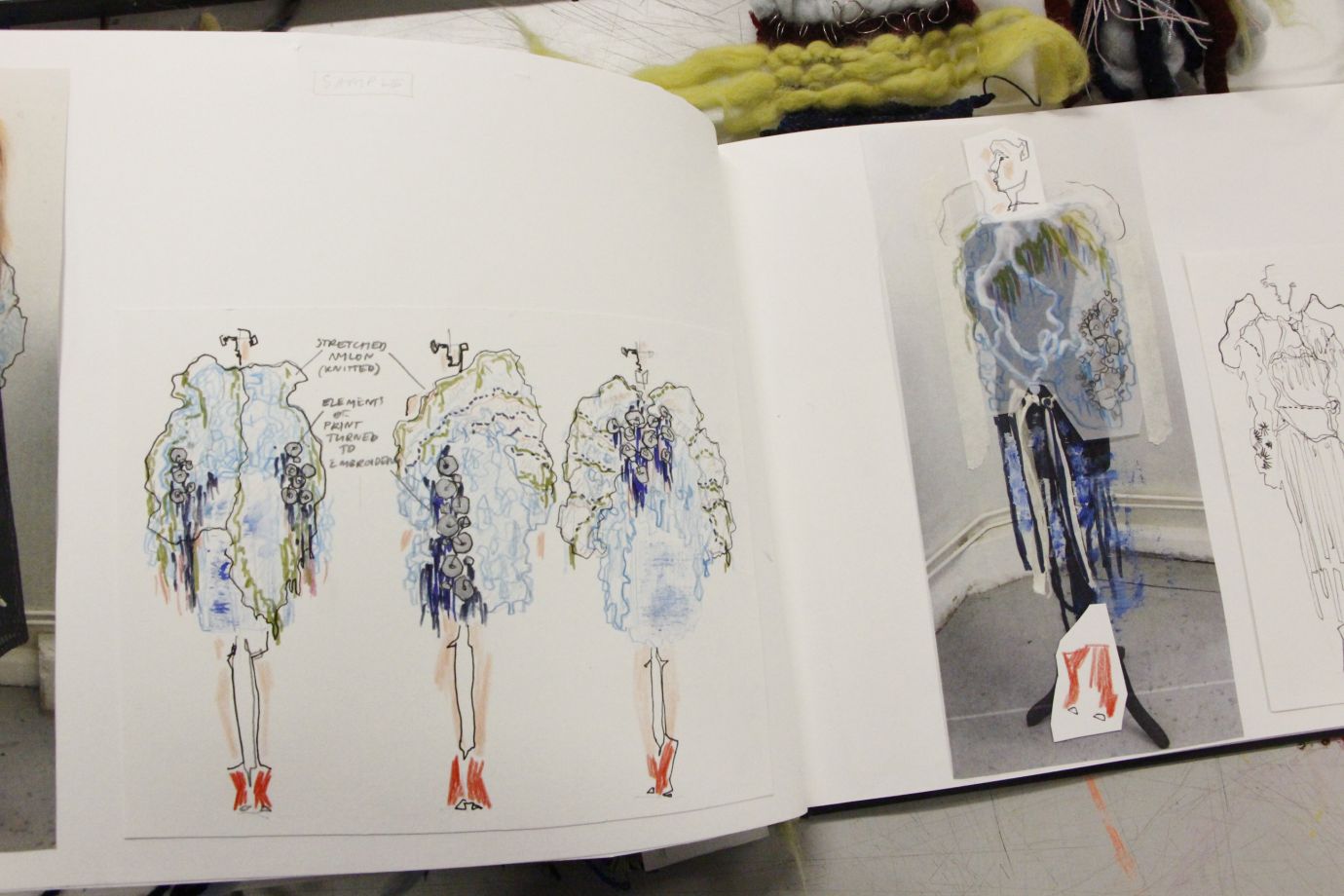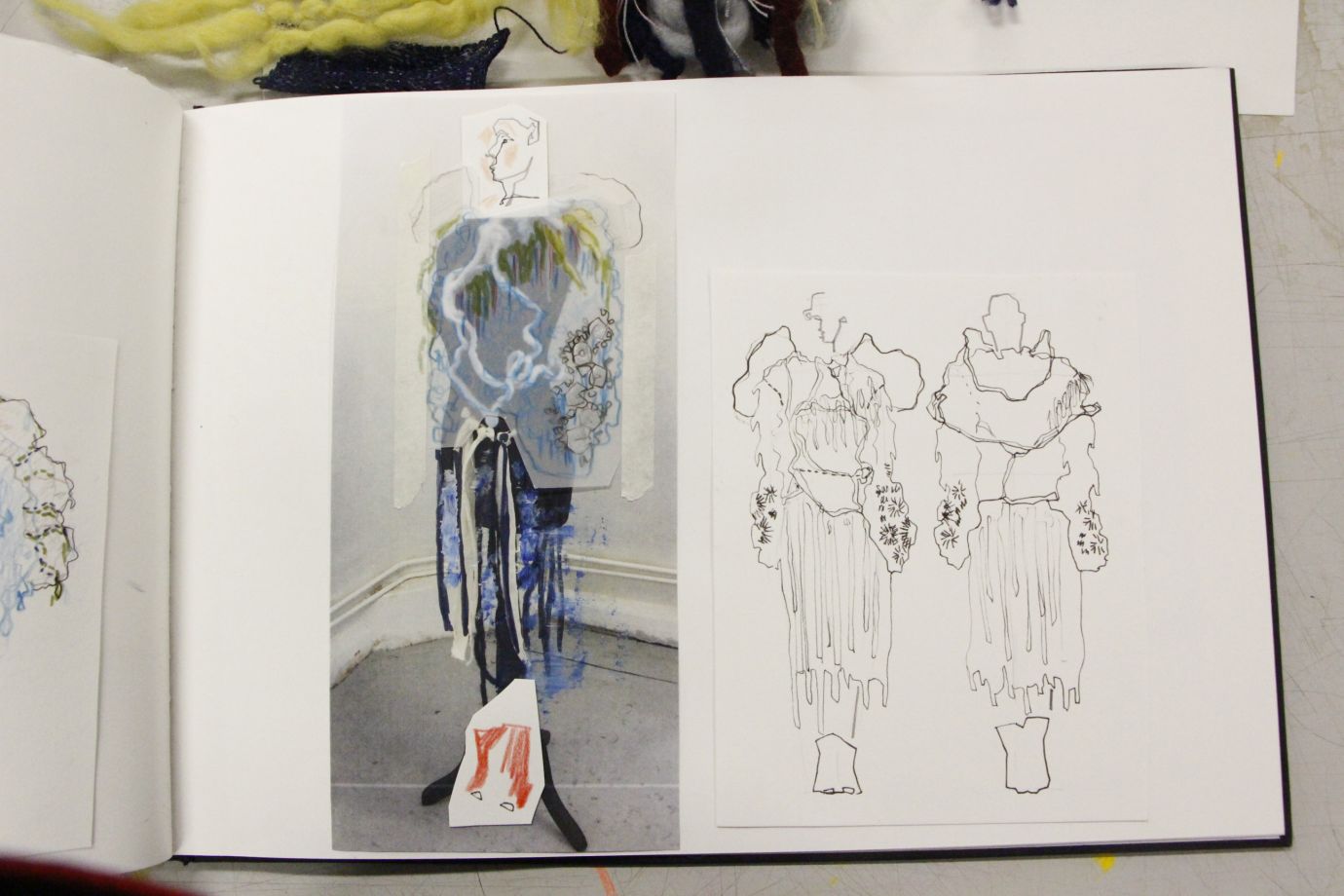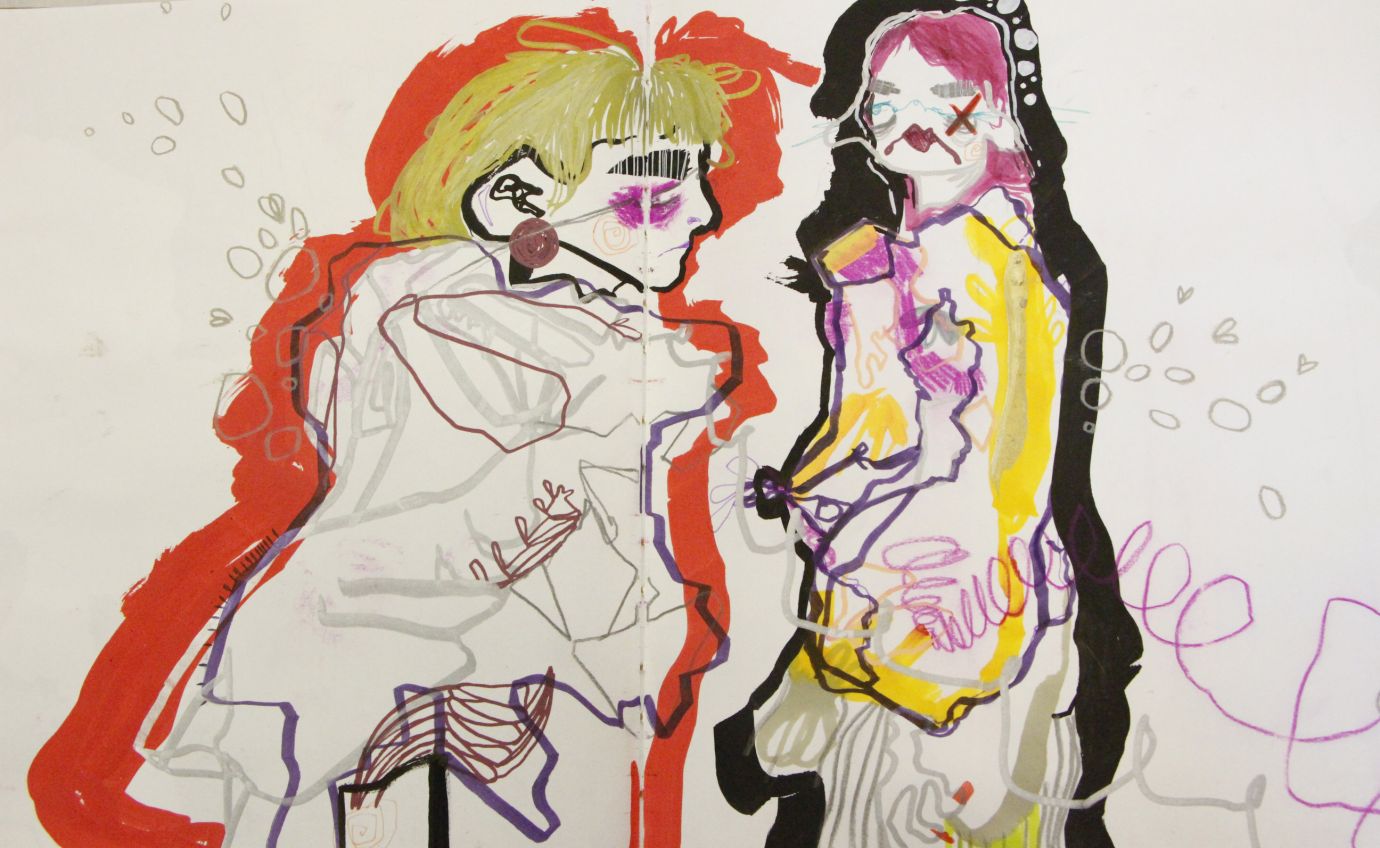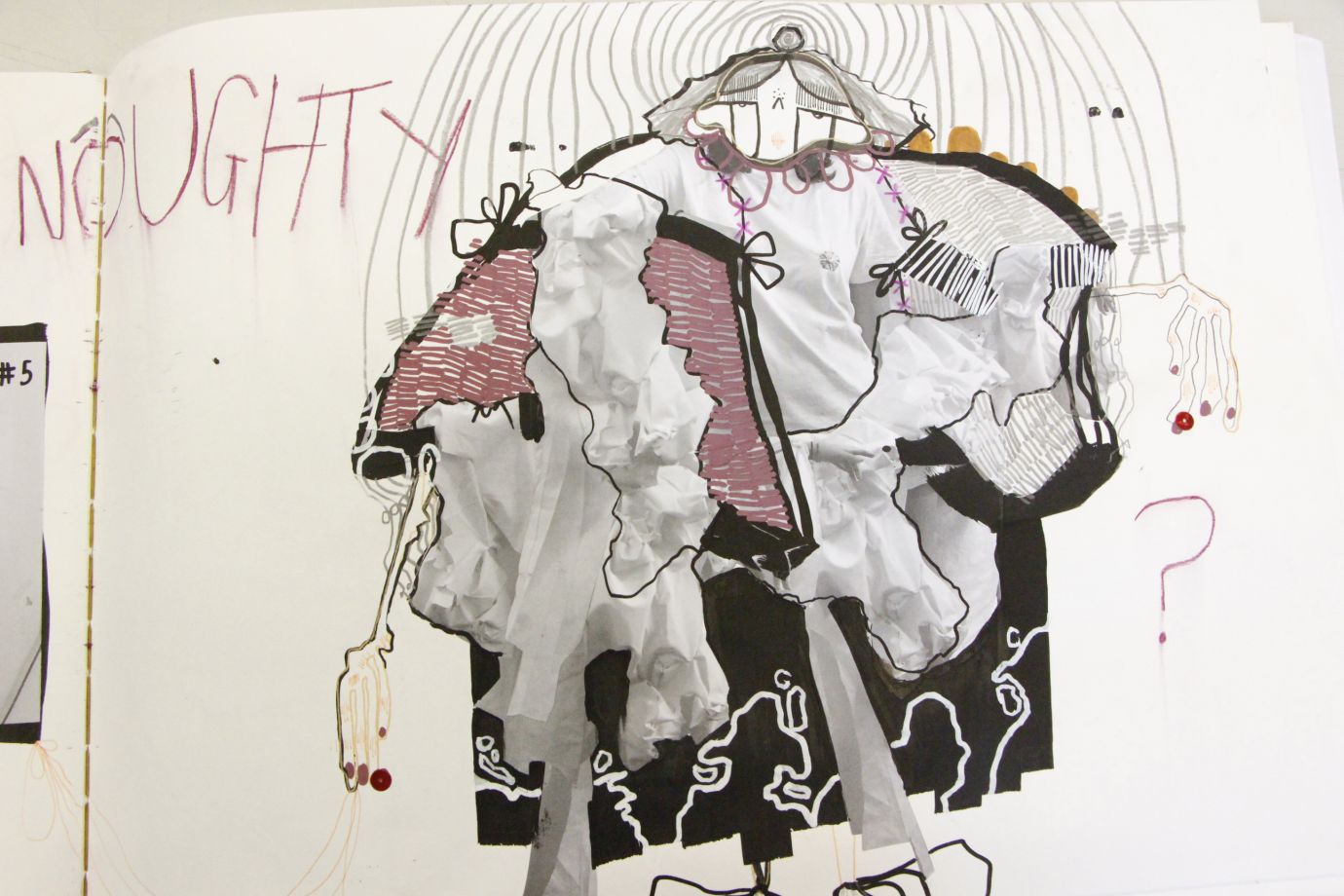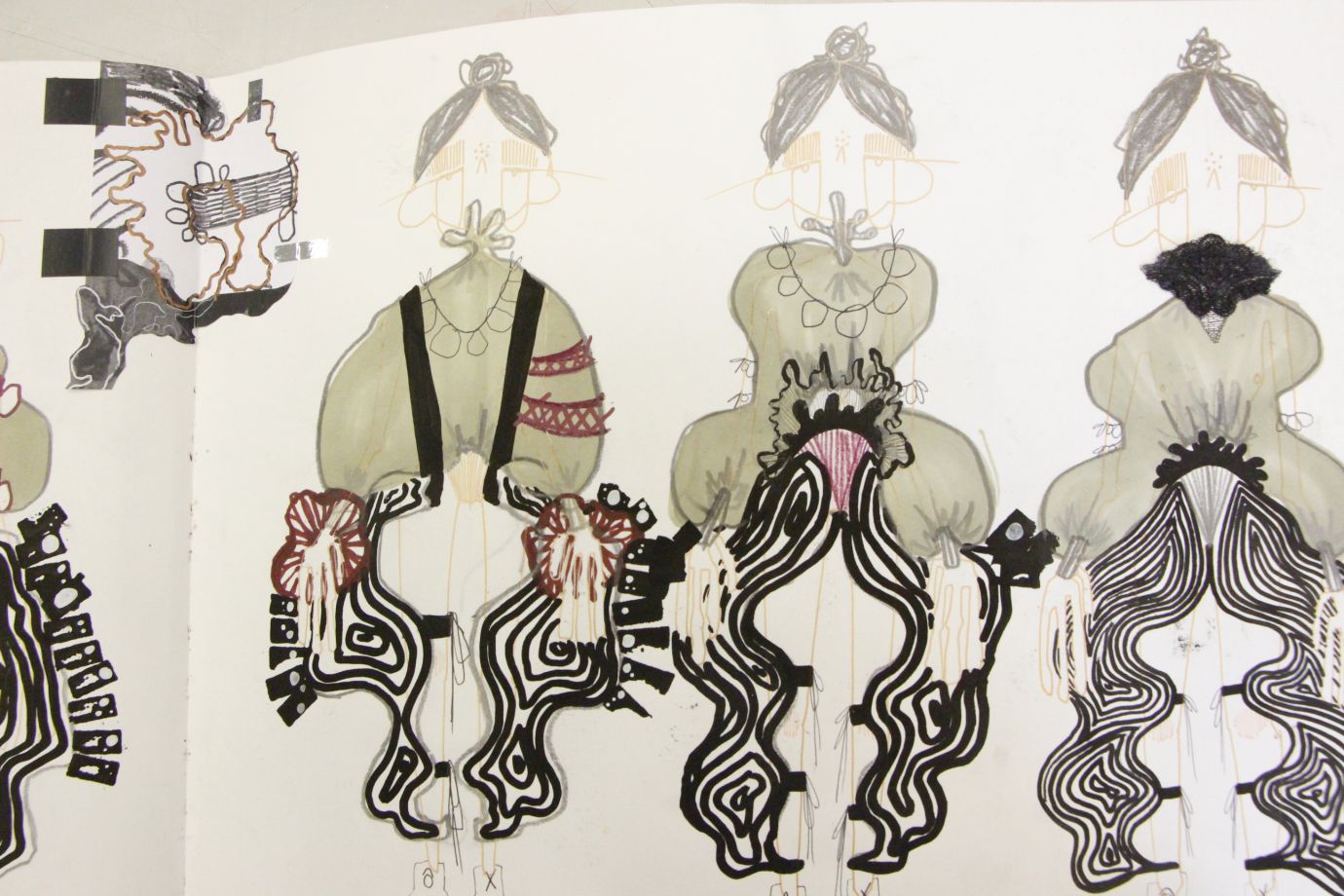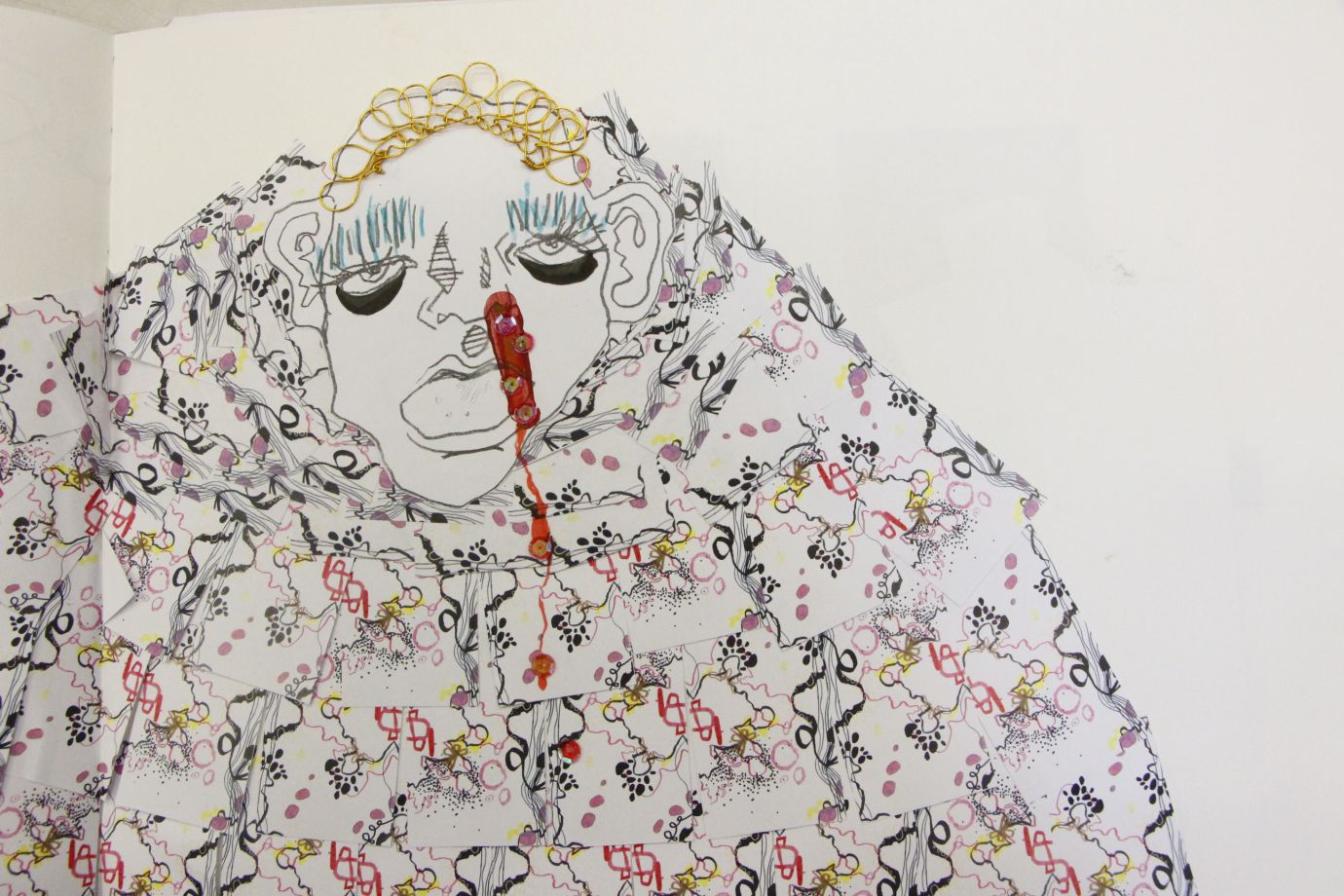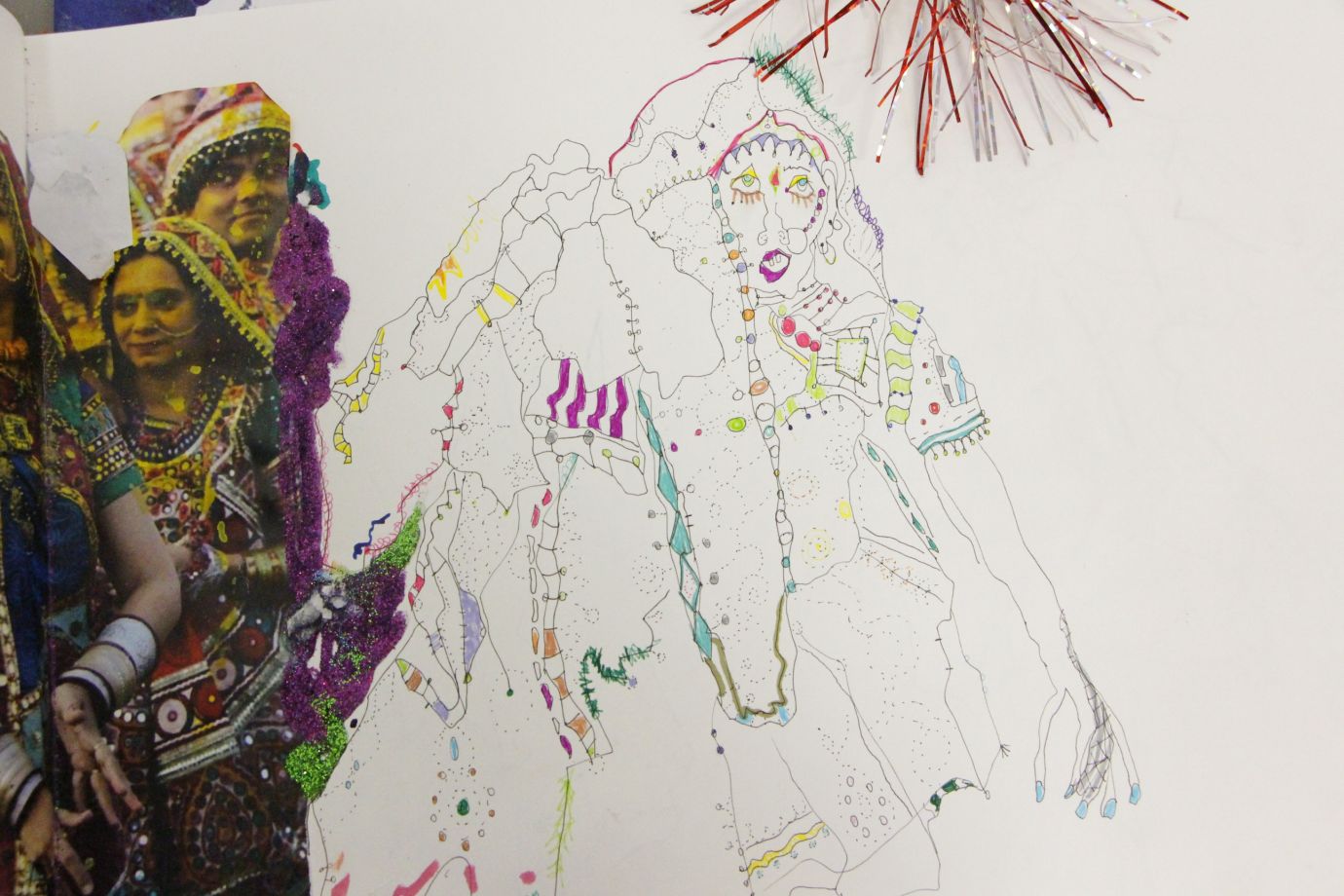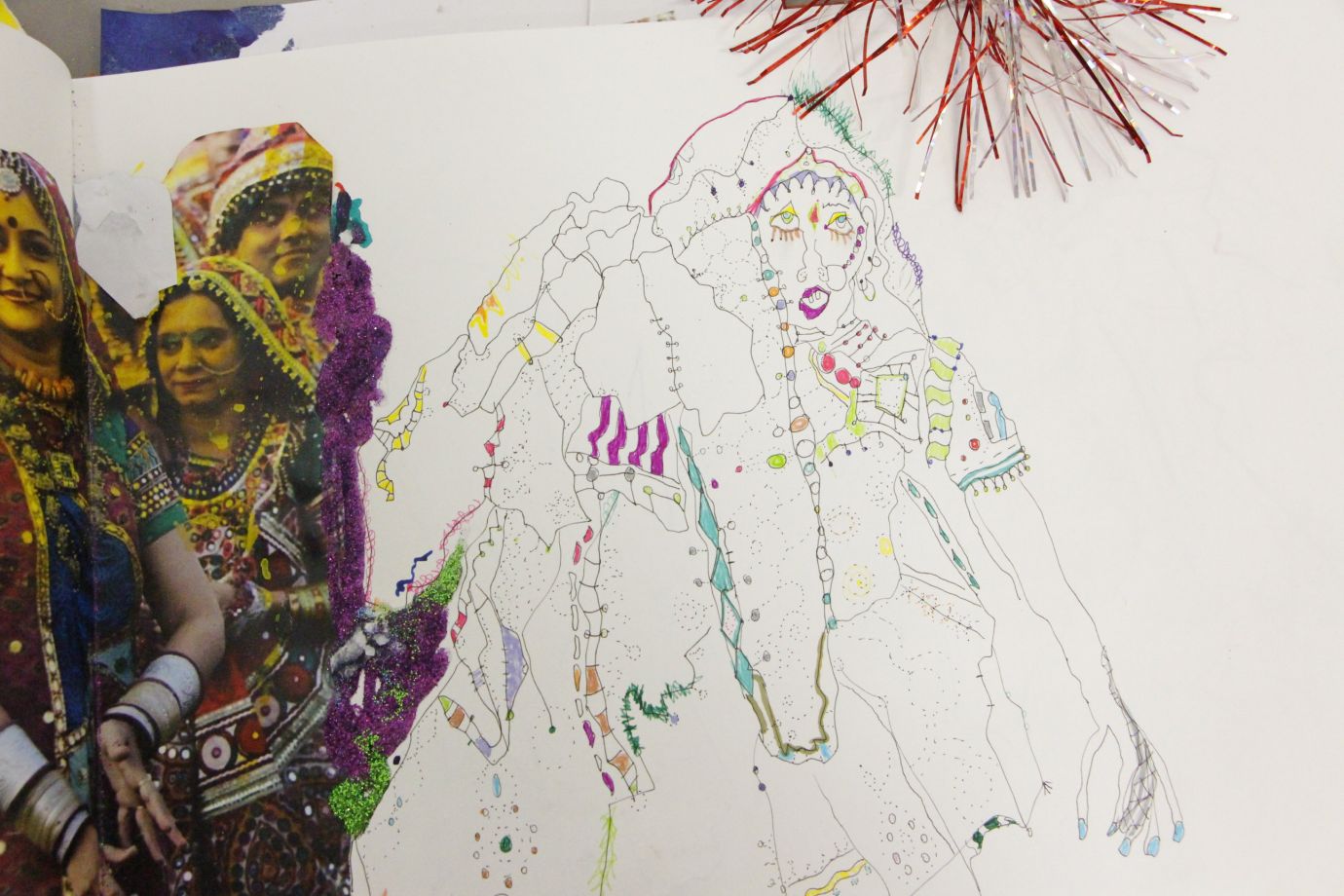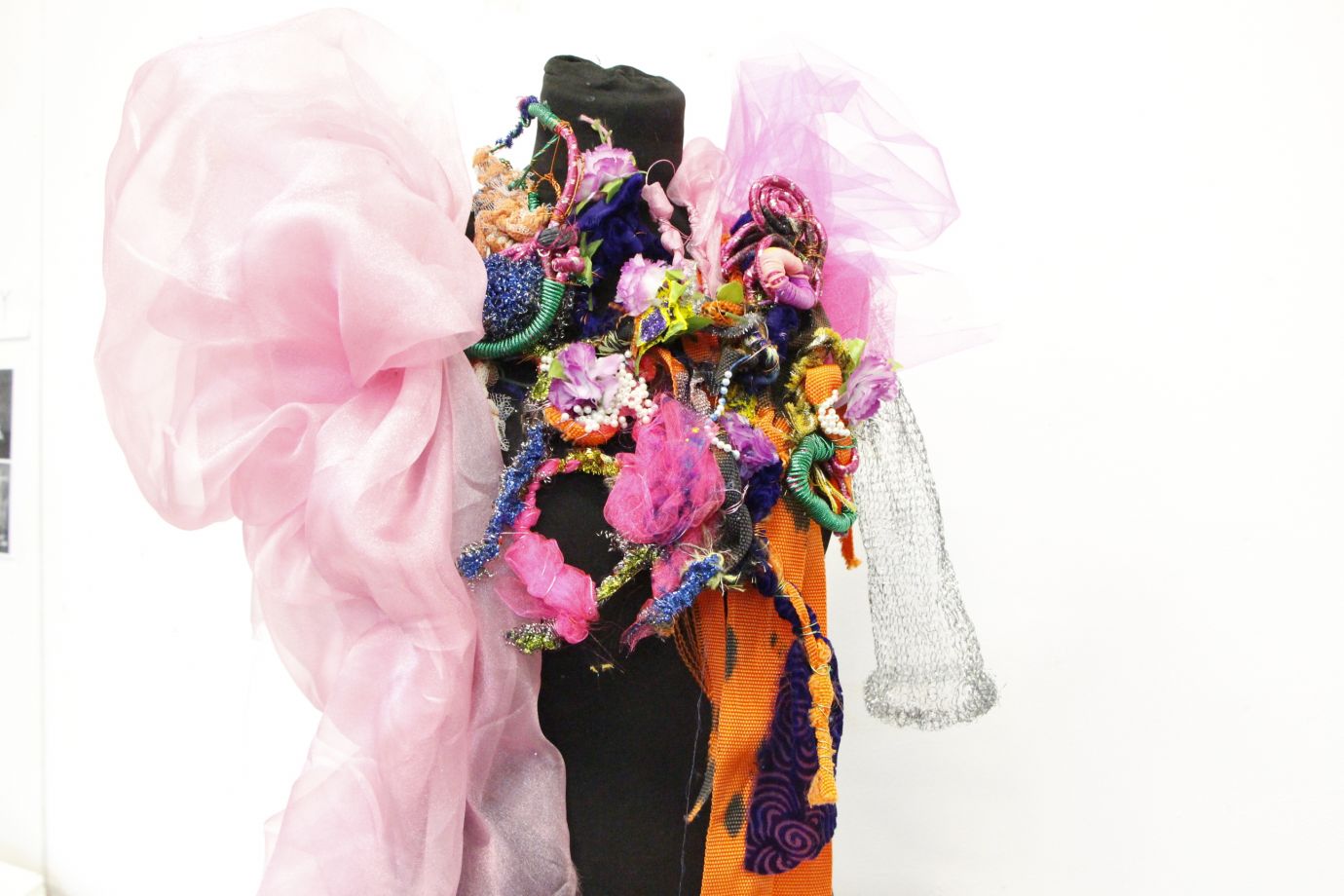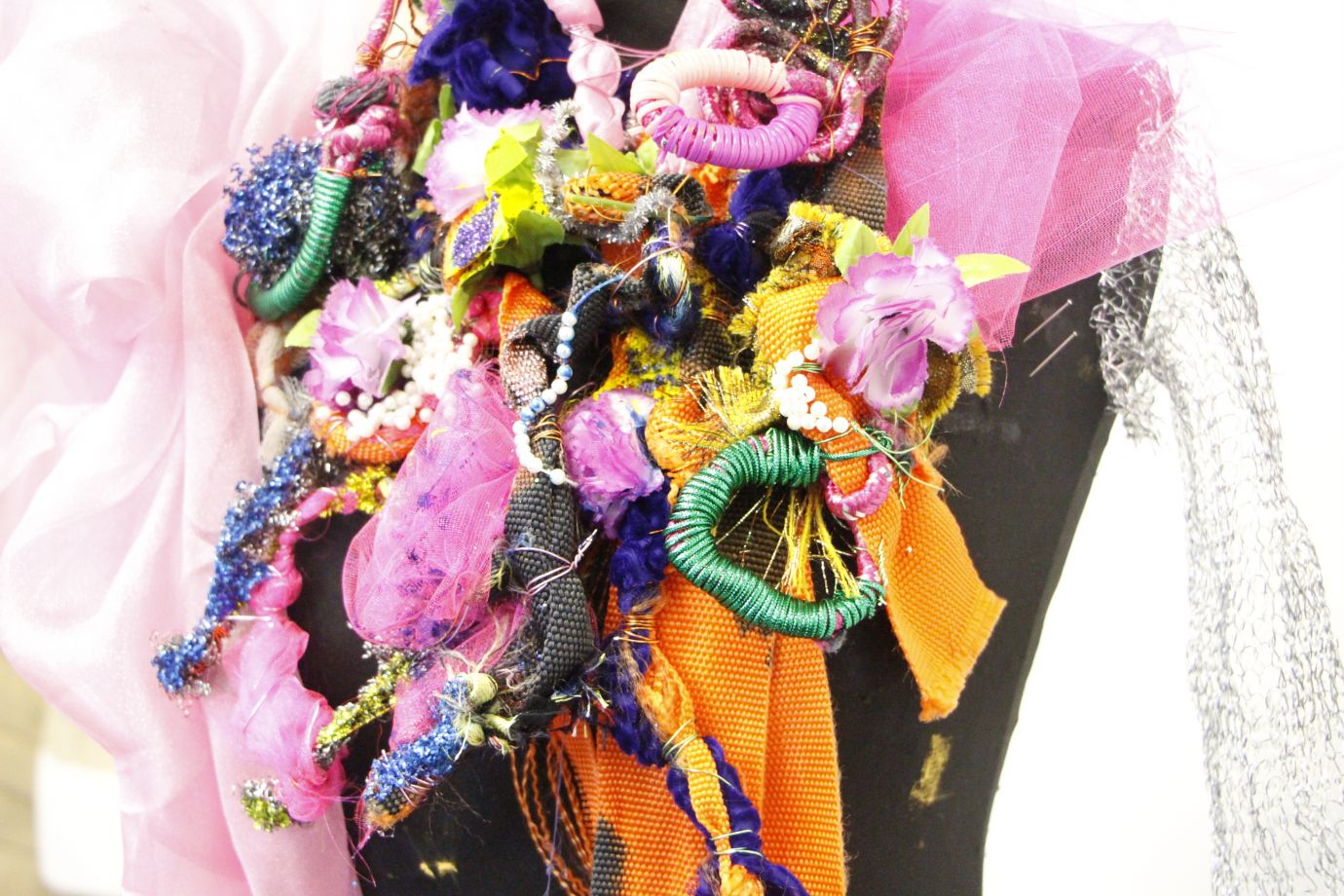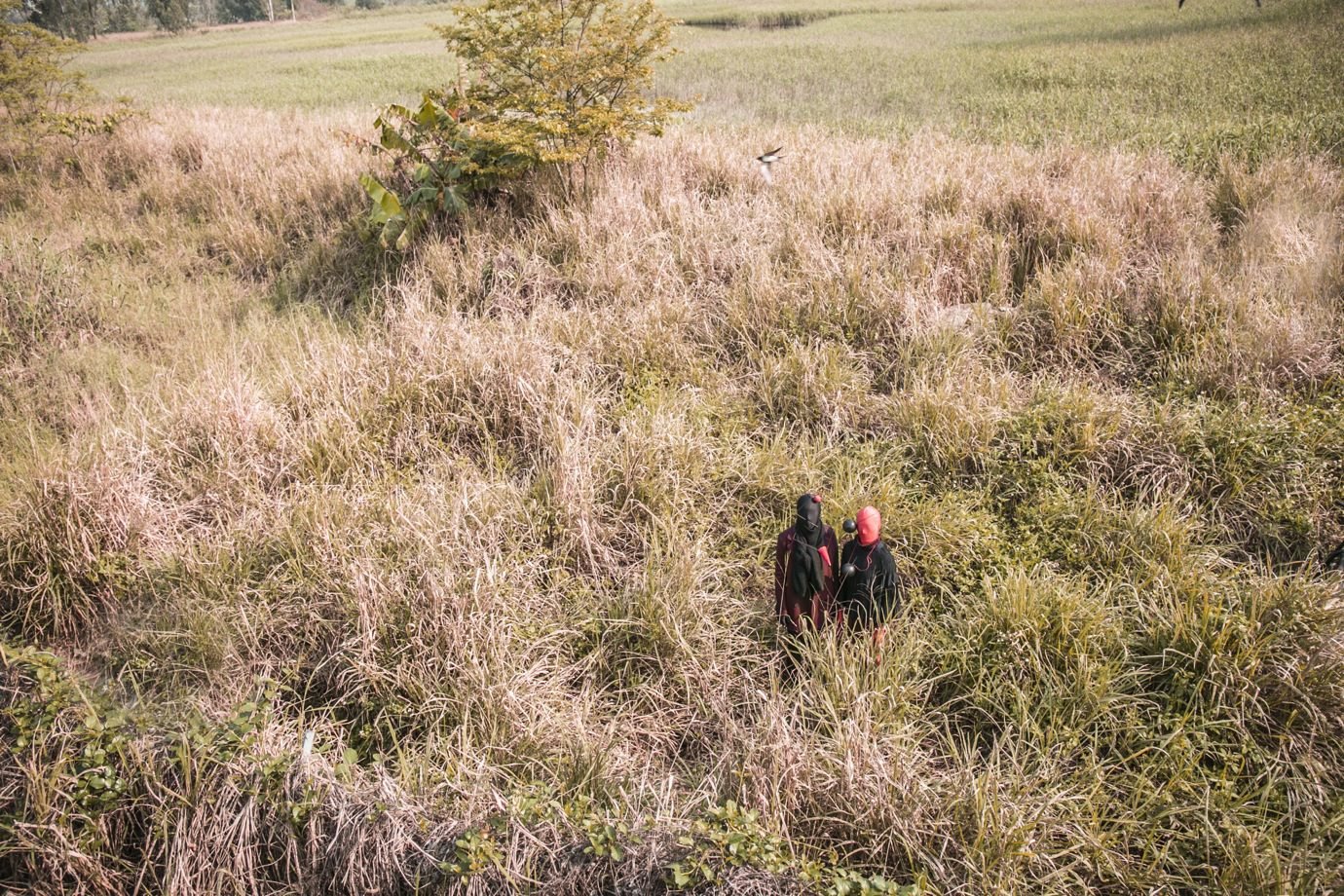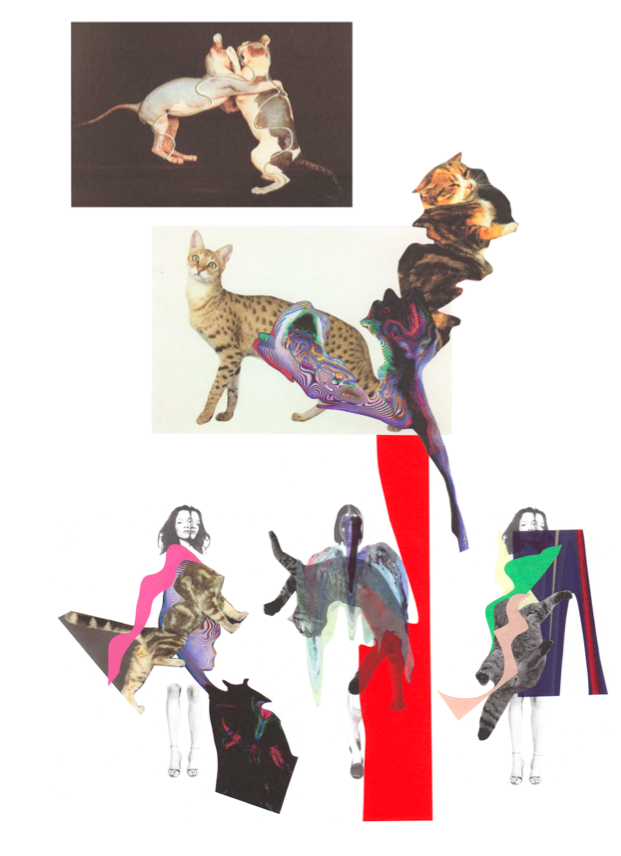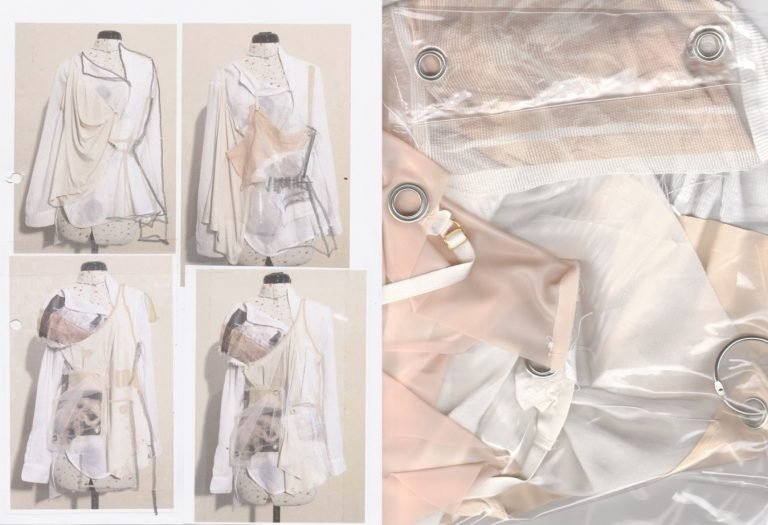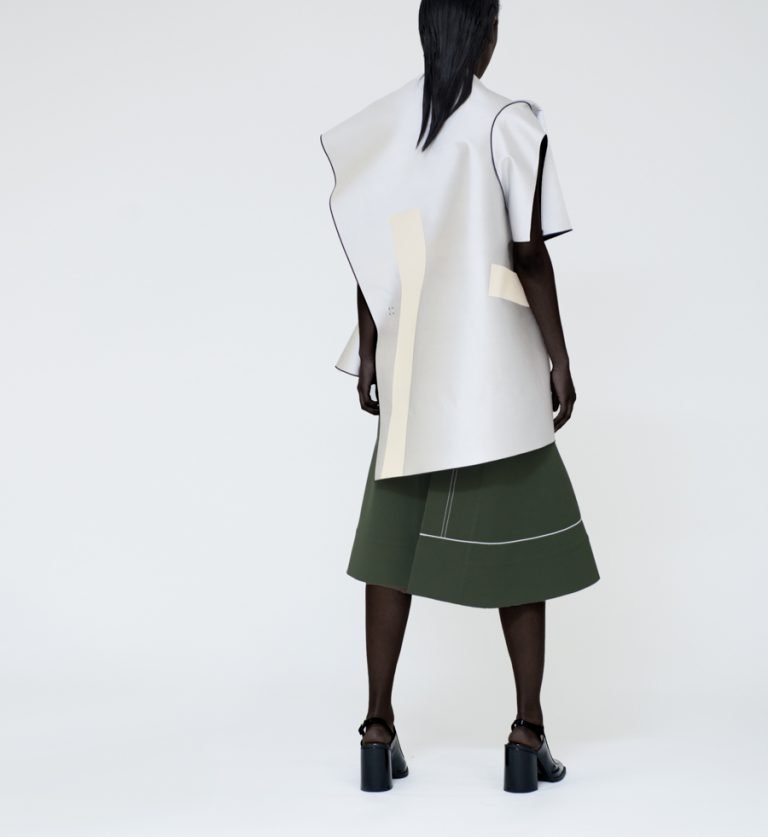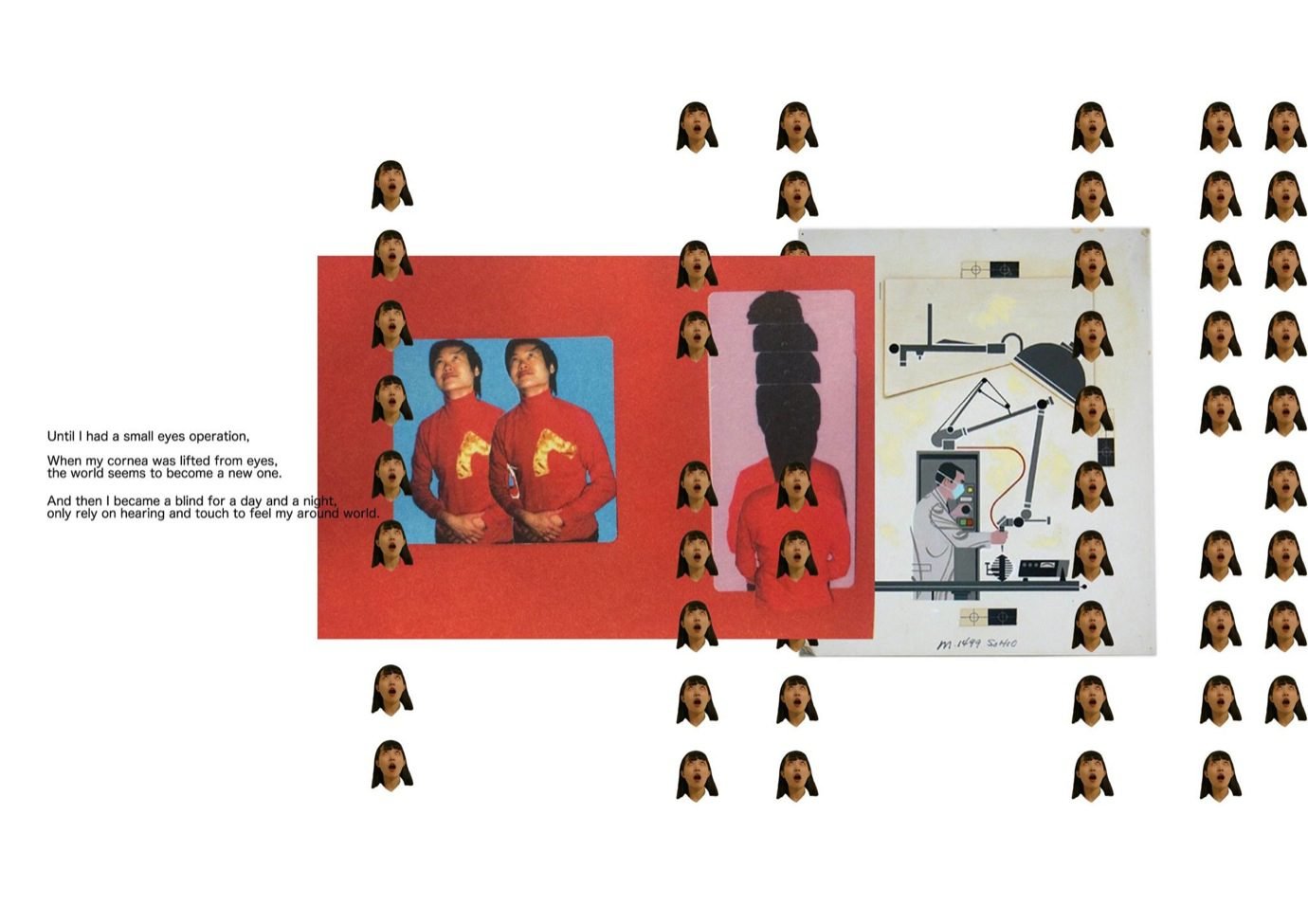Erica Prus’s project focusses on a recent trip to Calais where she volunteered during the height of the refugee crisis. Coming back, truly stirred as you would expect, she centered the project around the idea of the historic Paris revolution and bourgeois imagery. Erica’s adept interpretation of an incredibly hefty and heartfelt subject has led to a menswear concept, still developmental sketchbook work at the moment. Beautiful child-like illustrations, embroidery, royal blue, sashes and dainty flowers act out a level of irony. Erica is a fashion design student going on to the BA Menswear course at Central Saint Martins.
With a lot of work still in its infancy, Steven Chevallier’s elaborate tactile piece stands out. His project was inspired by ‘the fashion victim’, not as a tragic meme but rather focusing on the Rana Plaza disaster in 2013. Steven describes his project saying “it’s important for a fashion designer to understand his surrounding, his work atmosphere, the industry where he is and the impact he has in the world.” Developing structural designs from images of debris, his voluminous style and grotesque illustrations are integrated with traditional Bangladeshi culture in brightly coloured saris, national dress and accessories. Steven will go onto the BA Knitwear at Central Saint Martins.
On the fence, Isabella Smith is currently deciding between BA Print at Central Saint Martins or BA Fashion Design at Westminster. Isabella is exploring fashion as protest, from riot uniform to the suffragette movement. She is subverting the ideas of masculine traits in ‘protest’ fashion,“instead of trying to fit into a box where women will always be second best. I want to create clothing as a reaction against this, celebrating female expression.”
Another designer with a well developed concept was Bethany Williams who is on the textile pathway and will go on to BA Fashion & Knitwear. Bethany is using her project to explore female identity by subverting techniques usually categorised as ‘feminine hobbies’ such as crochet and embroidery. Using these as a way to communicate is integral to the way she works “I’m passionate about using my work as my voice,” she says, “as I struggle to verbalise my feelings towards myself and social issues. It’s a bonus if I change one person’s opinion.” The young designer plays with gender codes in dress, such as football scarves as hyper feminised merchandise, three of which were proudly on display.
Amber Healey takes the found object DIY aesthetic to another level: “a recent interest of mine has been looking at embroideries on controversial surfaces such as sewing sequins into a real fish.” Her sophisticated embroideries intertwine everyday objects, high-tech materials and traditional African garments and accessories. Amber’s project comments on flooding and drought in Africa, contrasting natural found objects with long life materials such as plastic and metal tubing in decorative traditional accessories. She will go onto study BA Fashion Design with Marketing at CSM.
Julia Labis’ inspiration comes from her hometown of Krakow and the deadly pollution that lingers in the Polish city. Examining the relationship between mass production, consumer culture and craftsmanship, Julia is labouring at some old school techniques. She is borrowing techniques from the Medieval ages to create her own fabric which takes three hours per metre. Championing the sustainability of the hand made, Julia artfully mixes fibres like fishing wire, wool and self-taught knitting techniques into intricate samples. She invests a huge amount of dedication into these slow, demanding processes and has a lot of love for her craft. Julia is also going onto Fashion Design & Knitwear at CSM.

